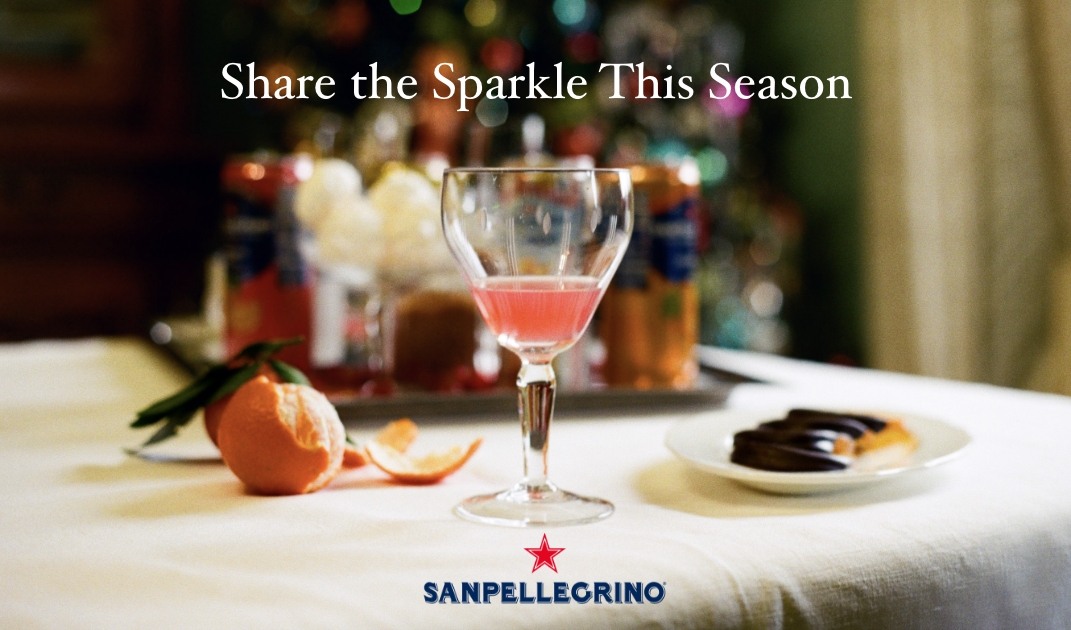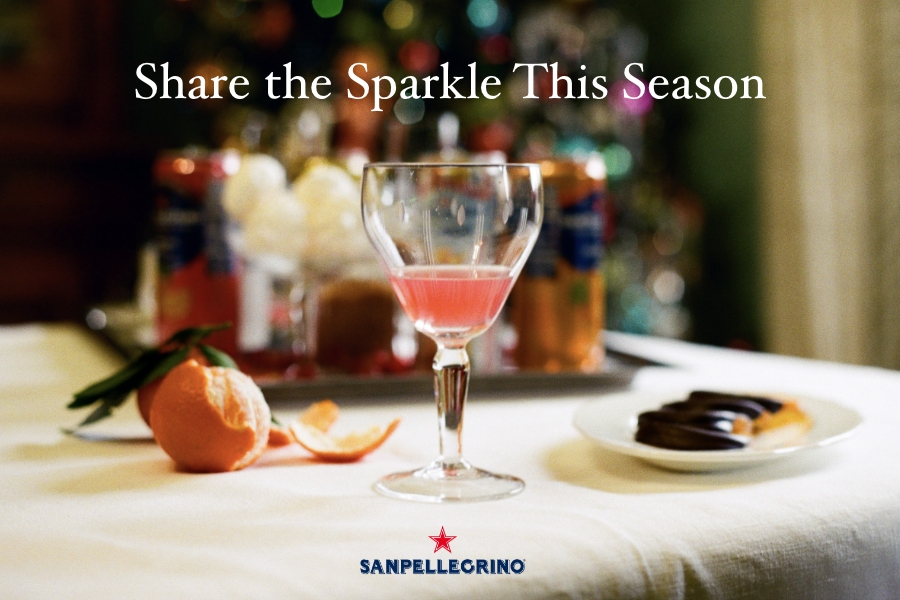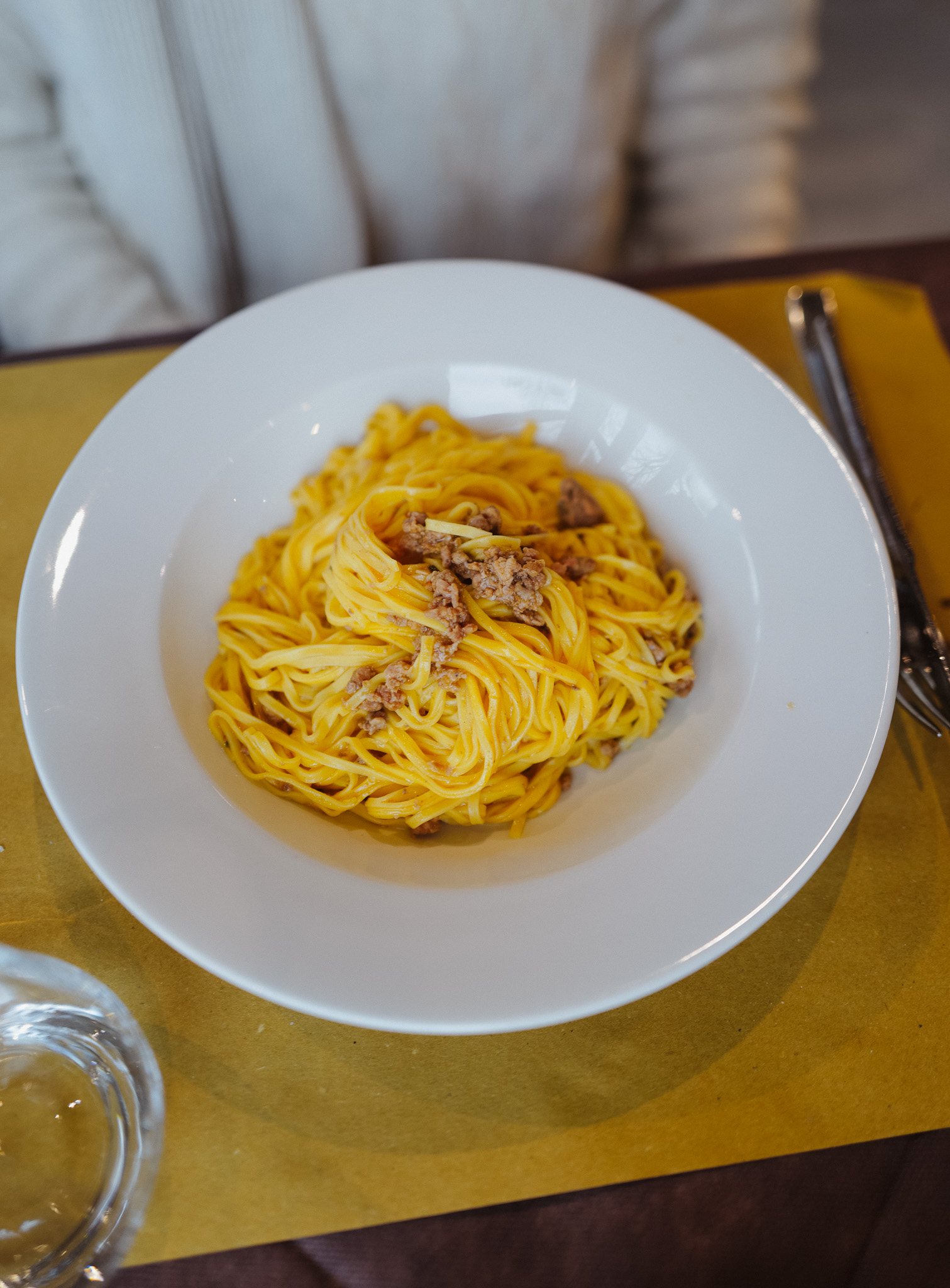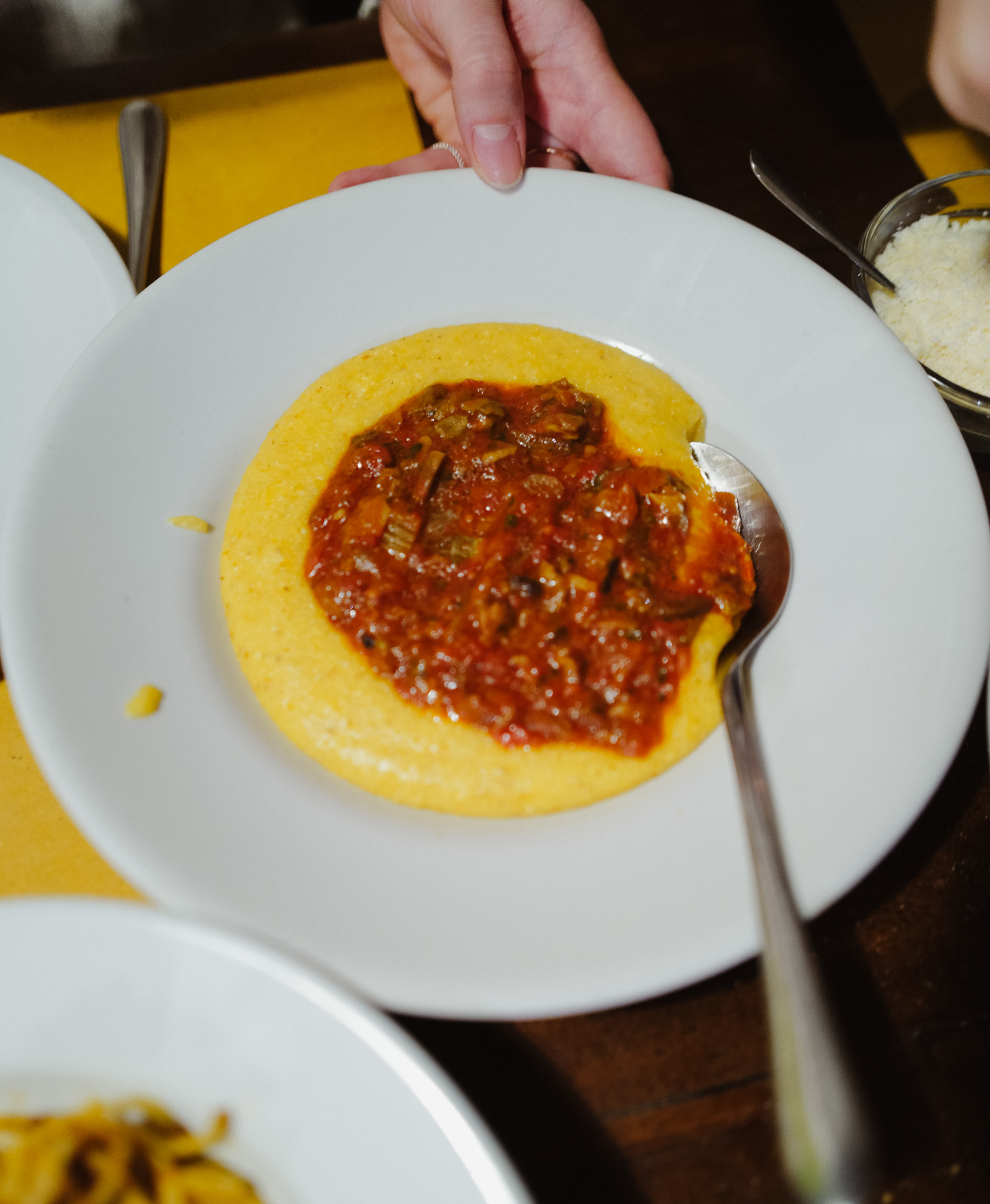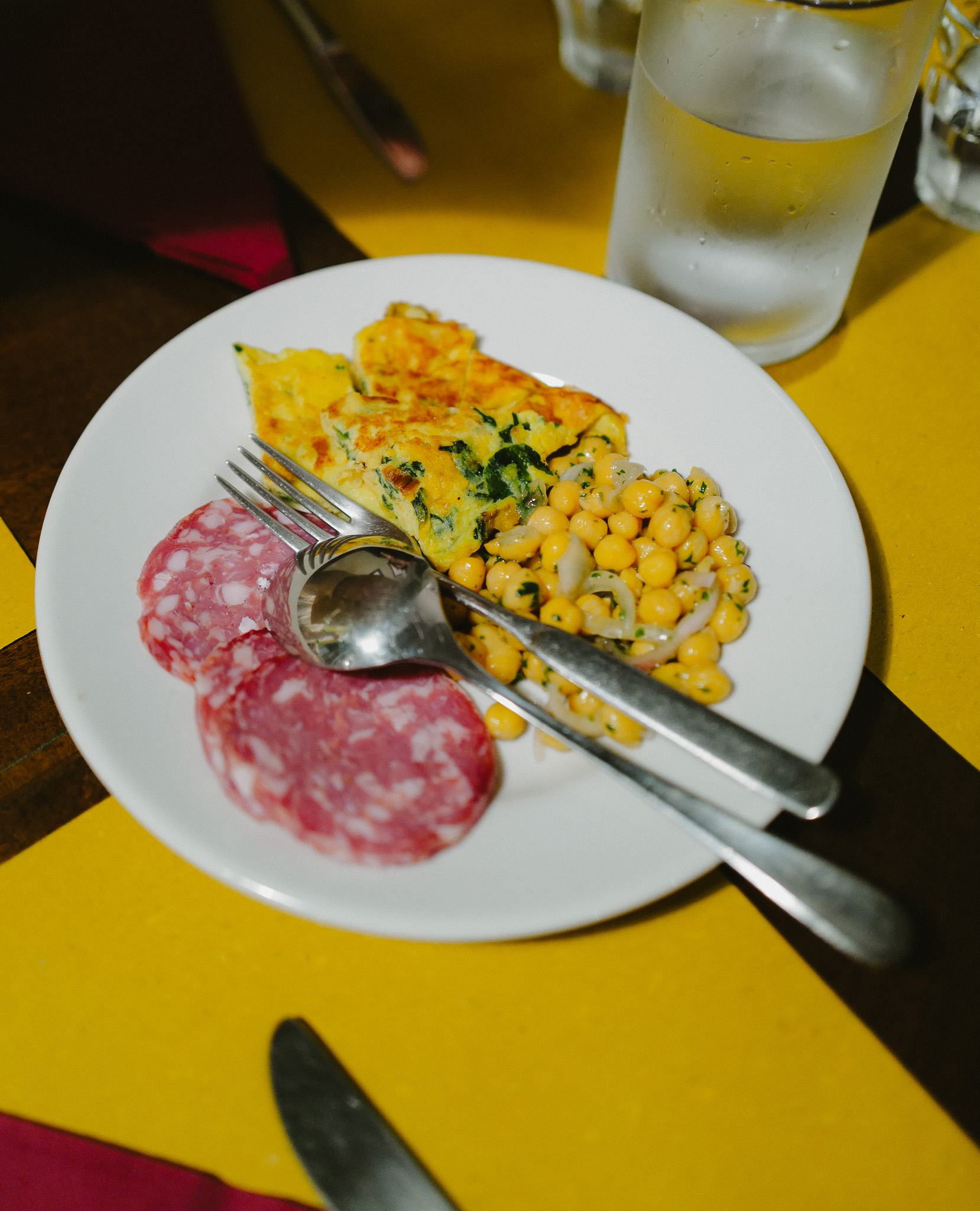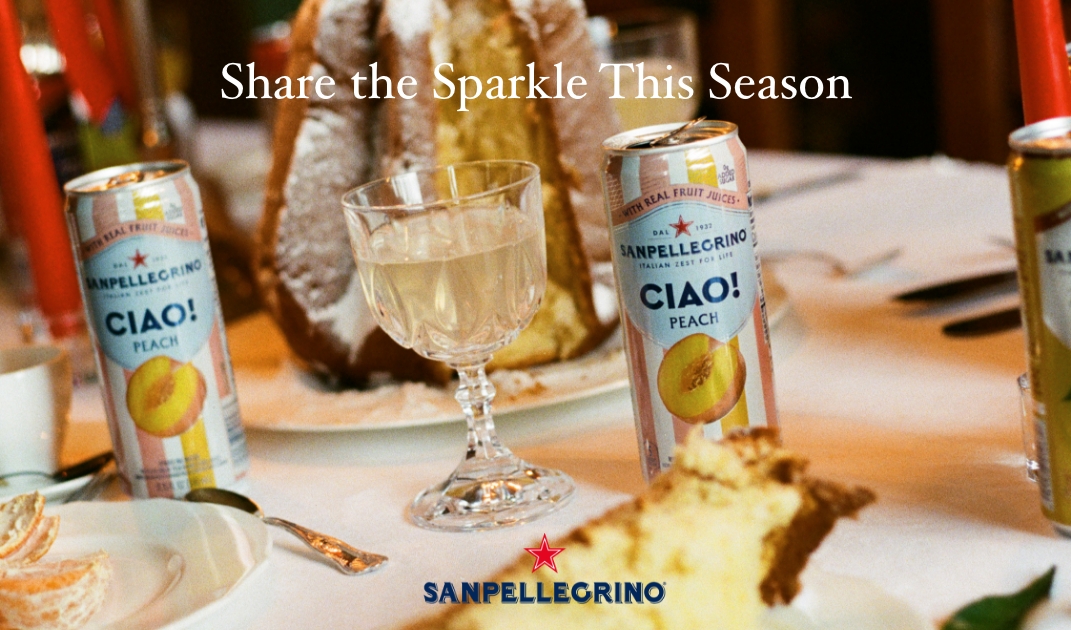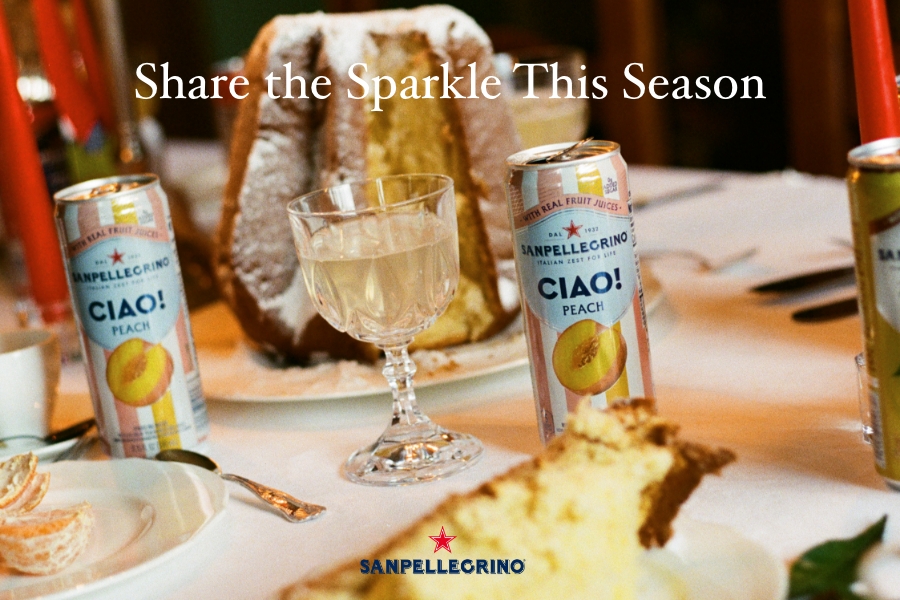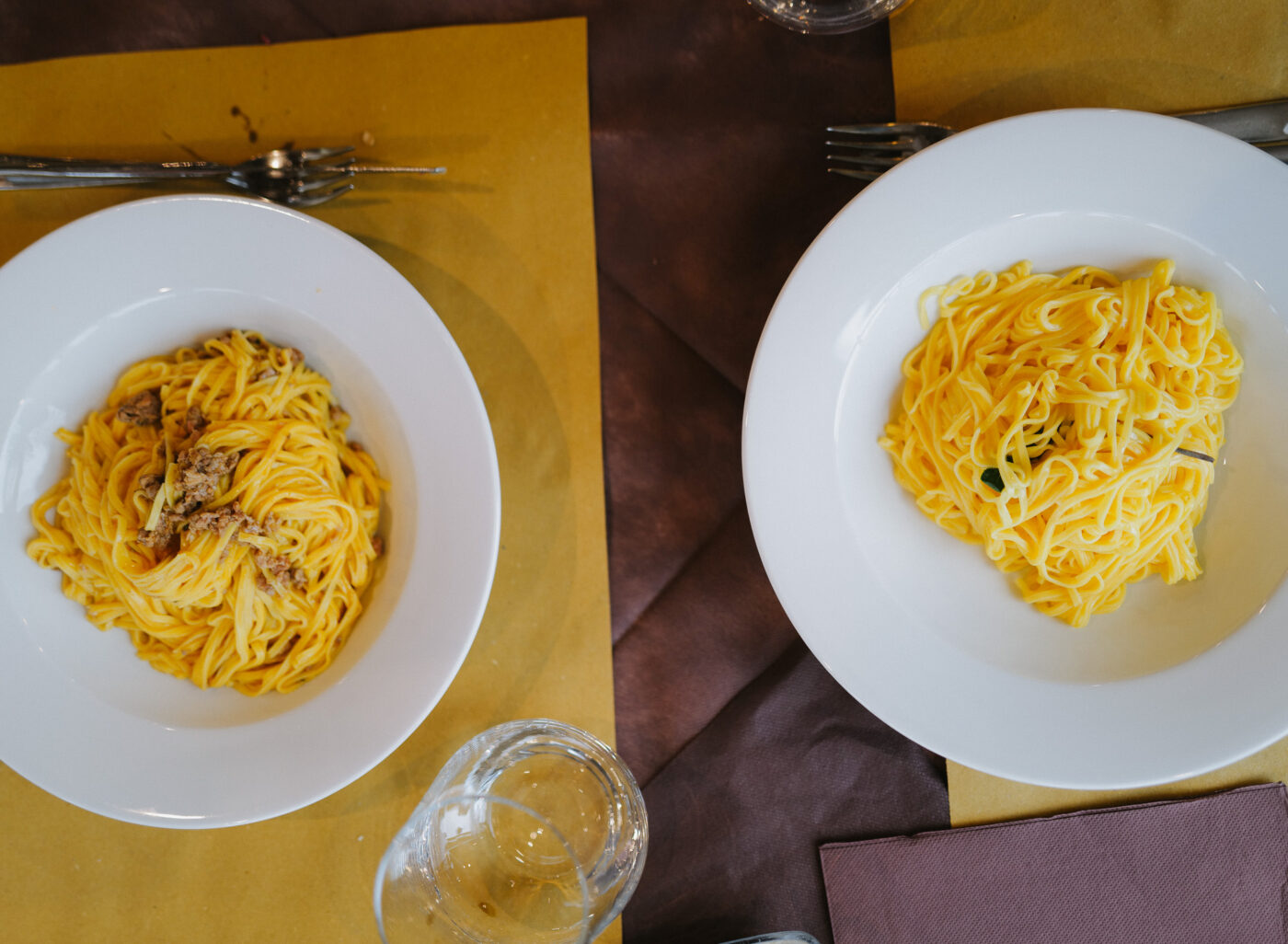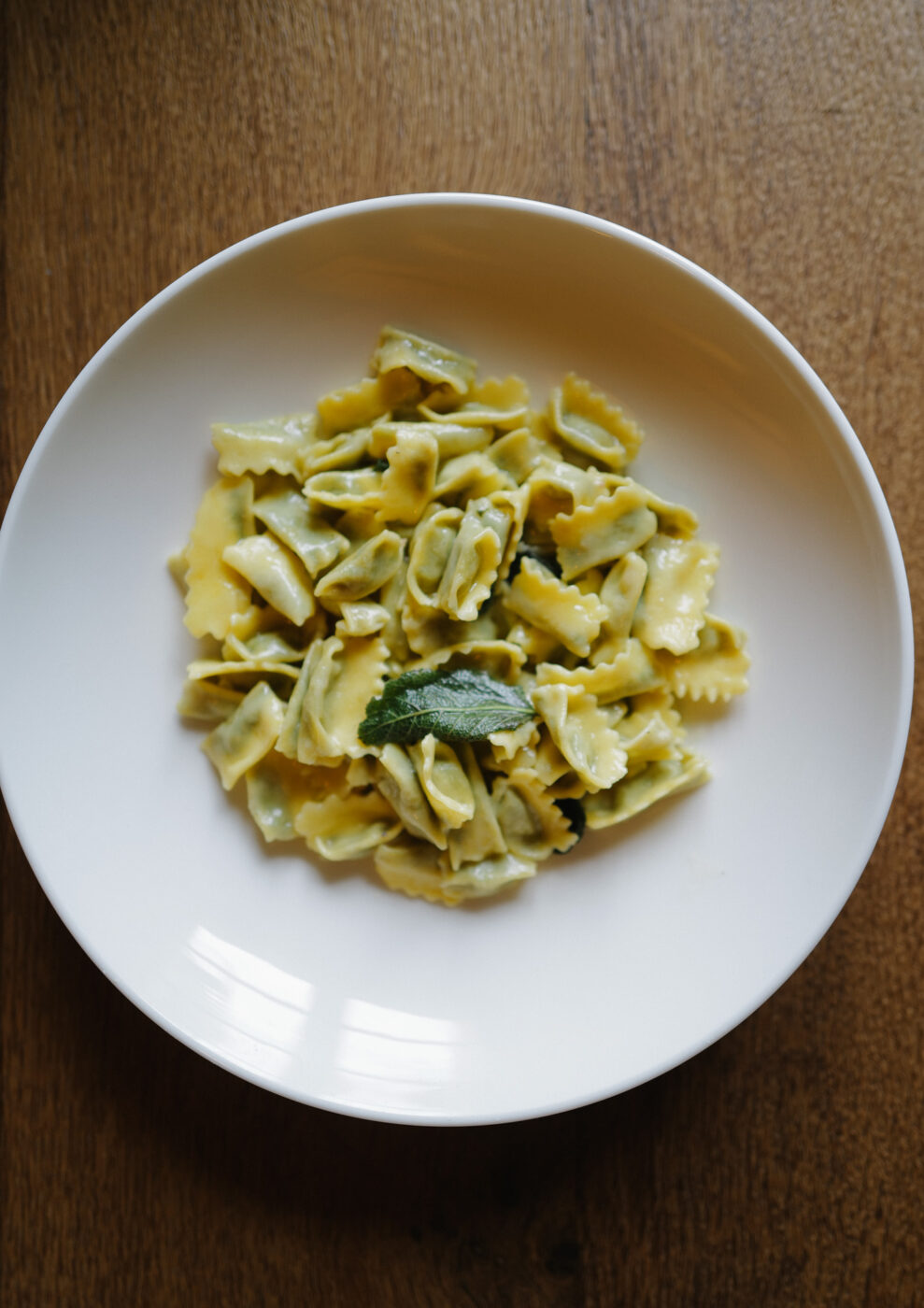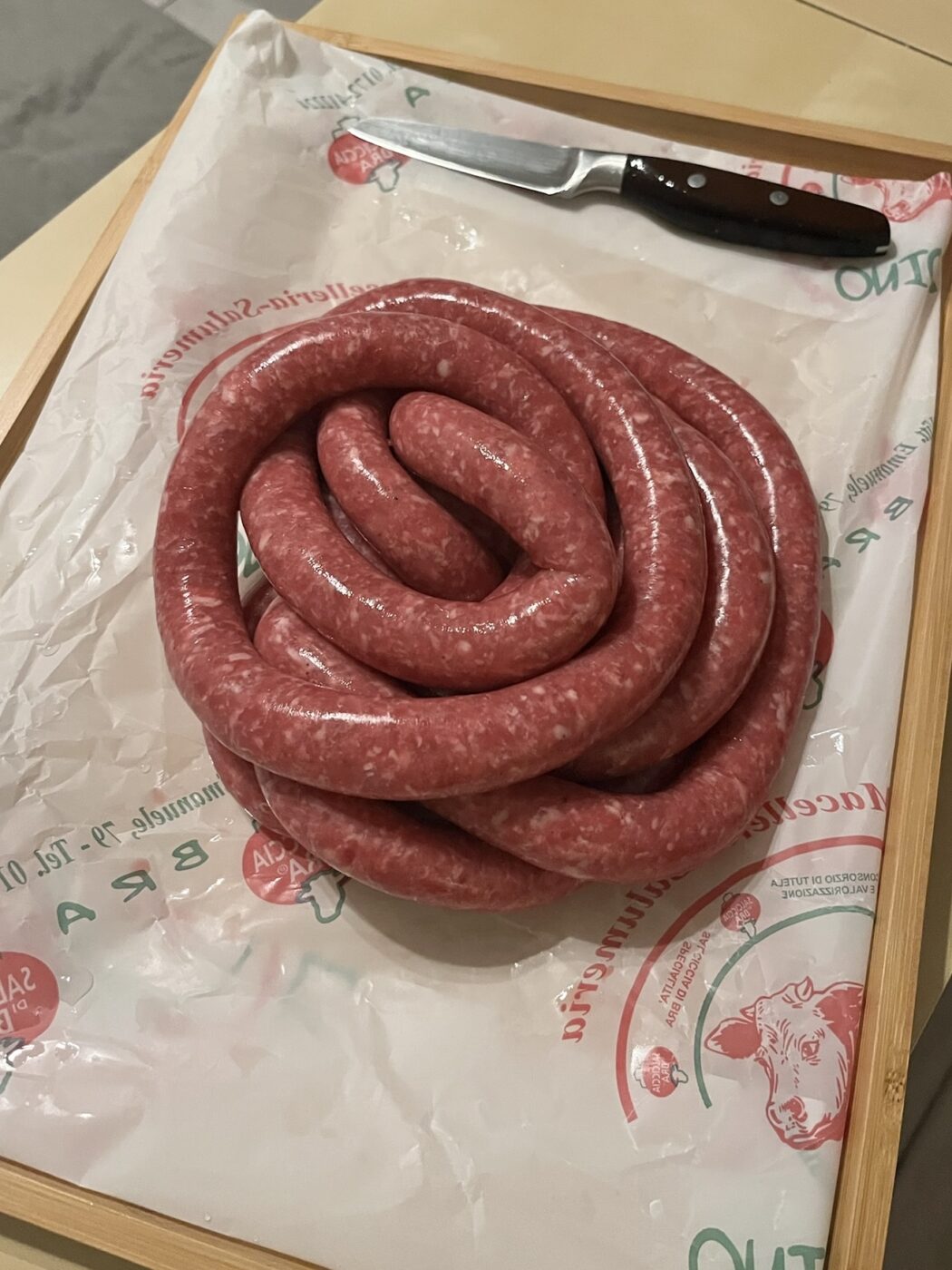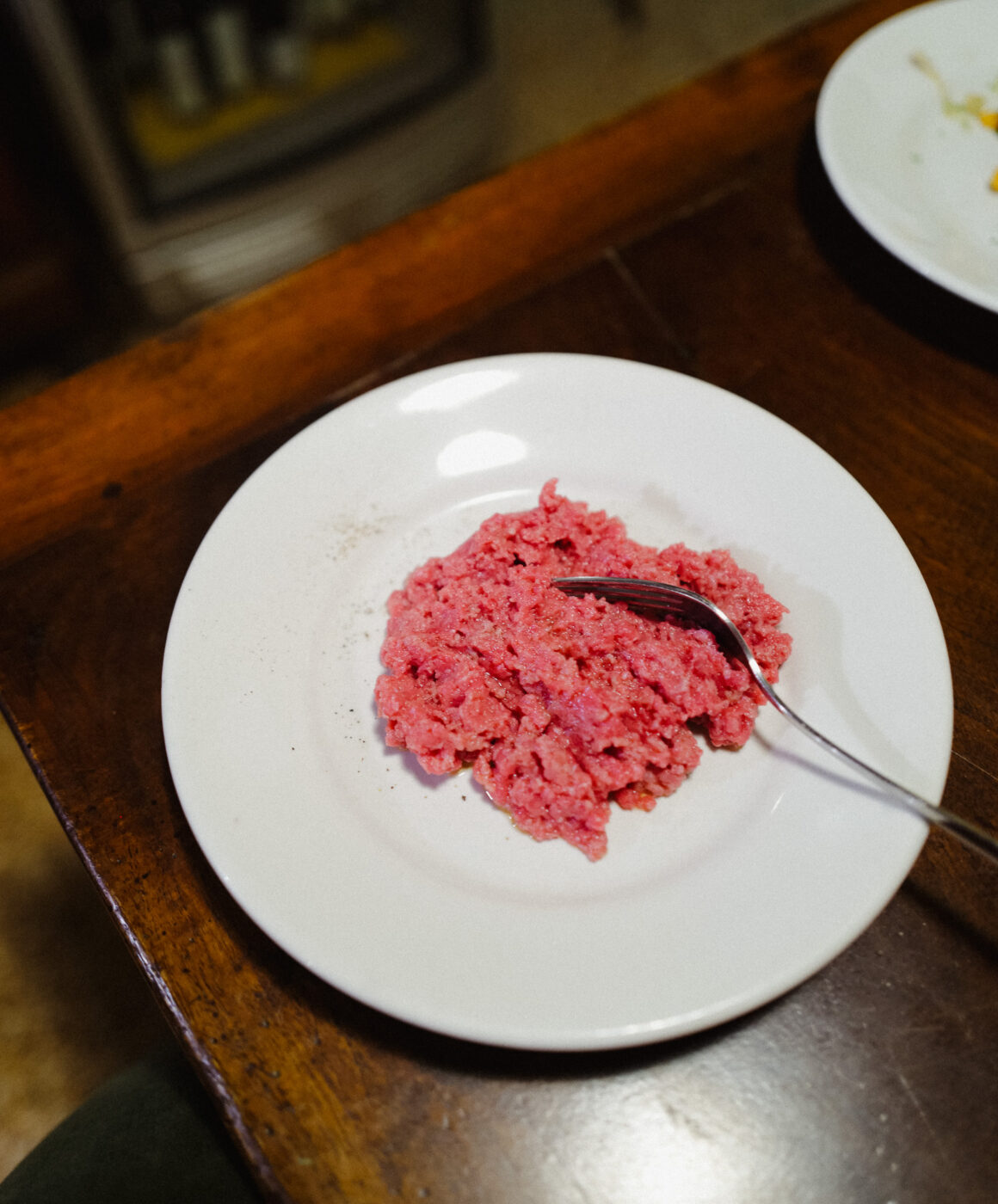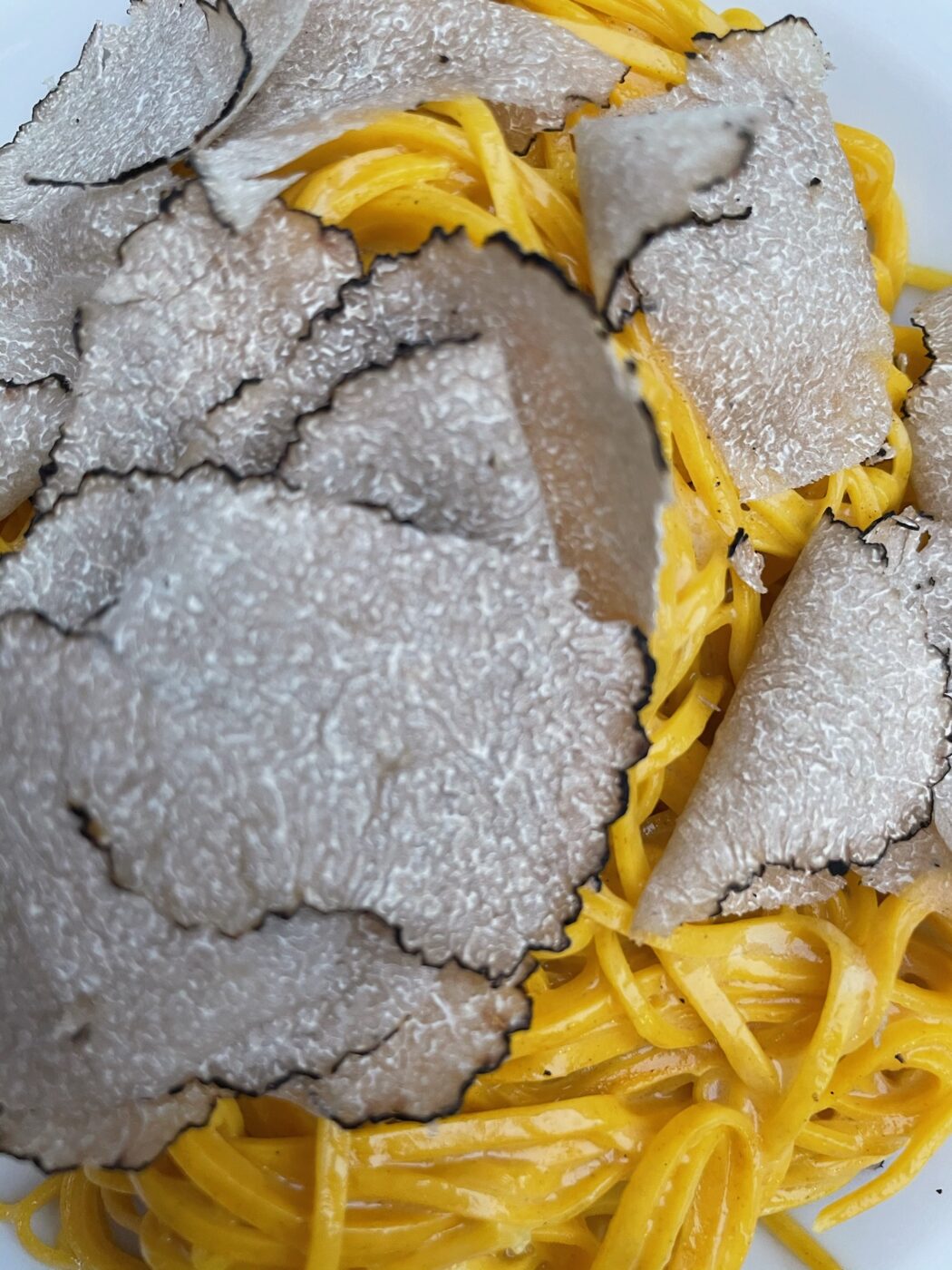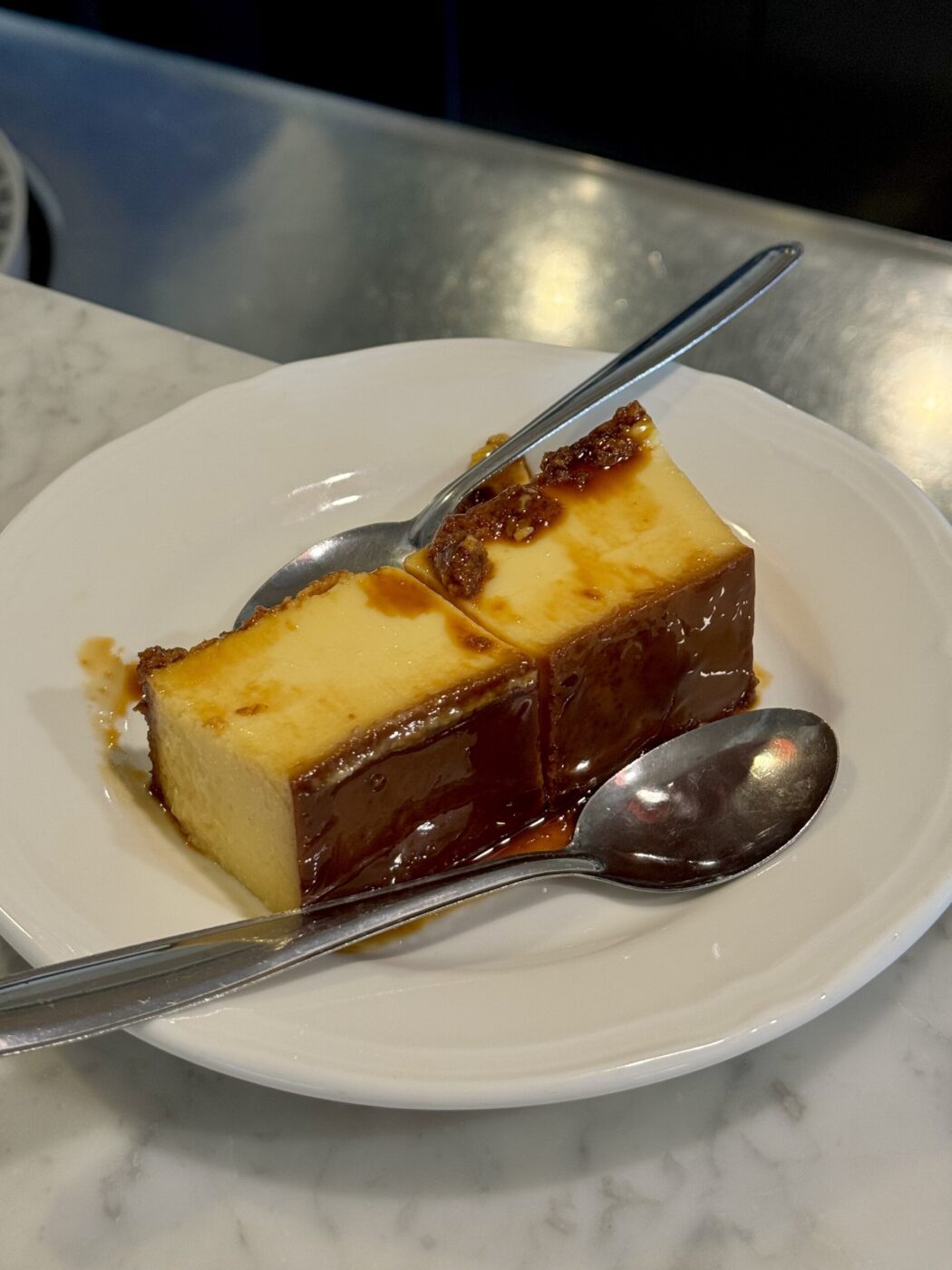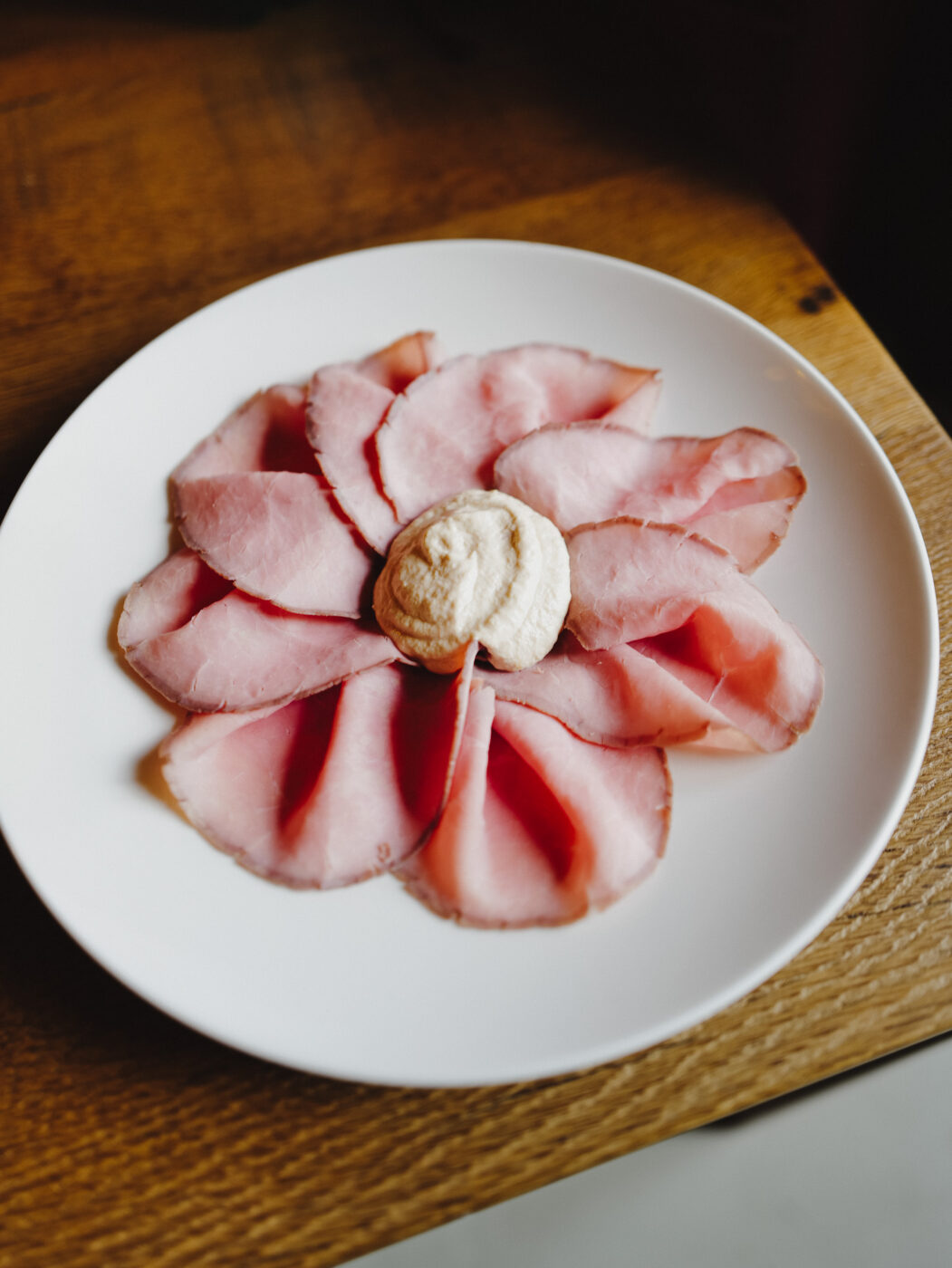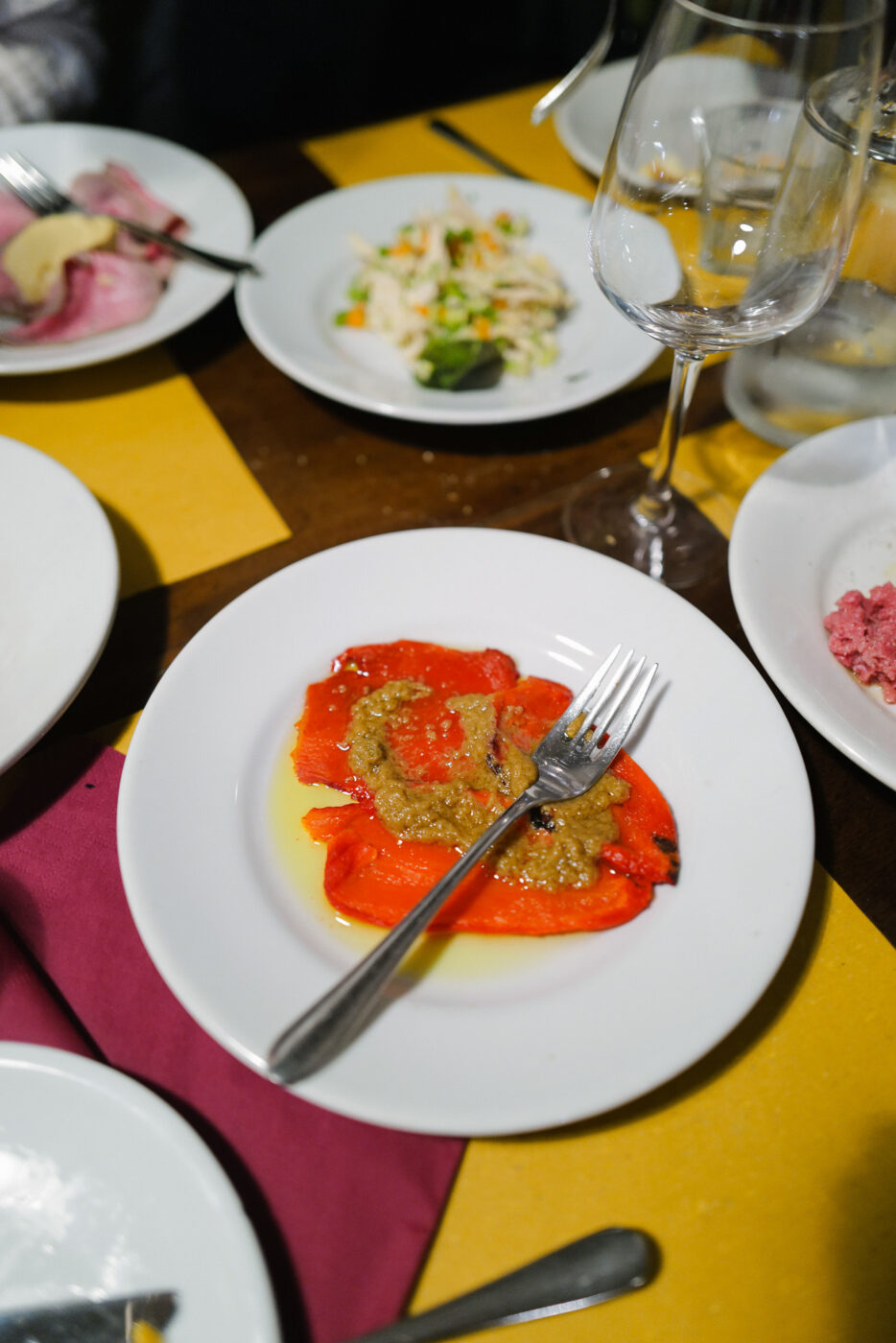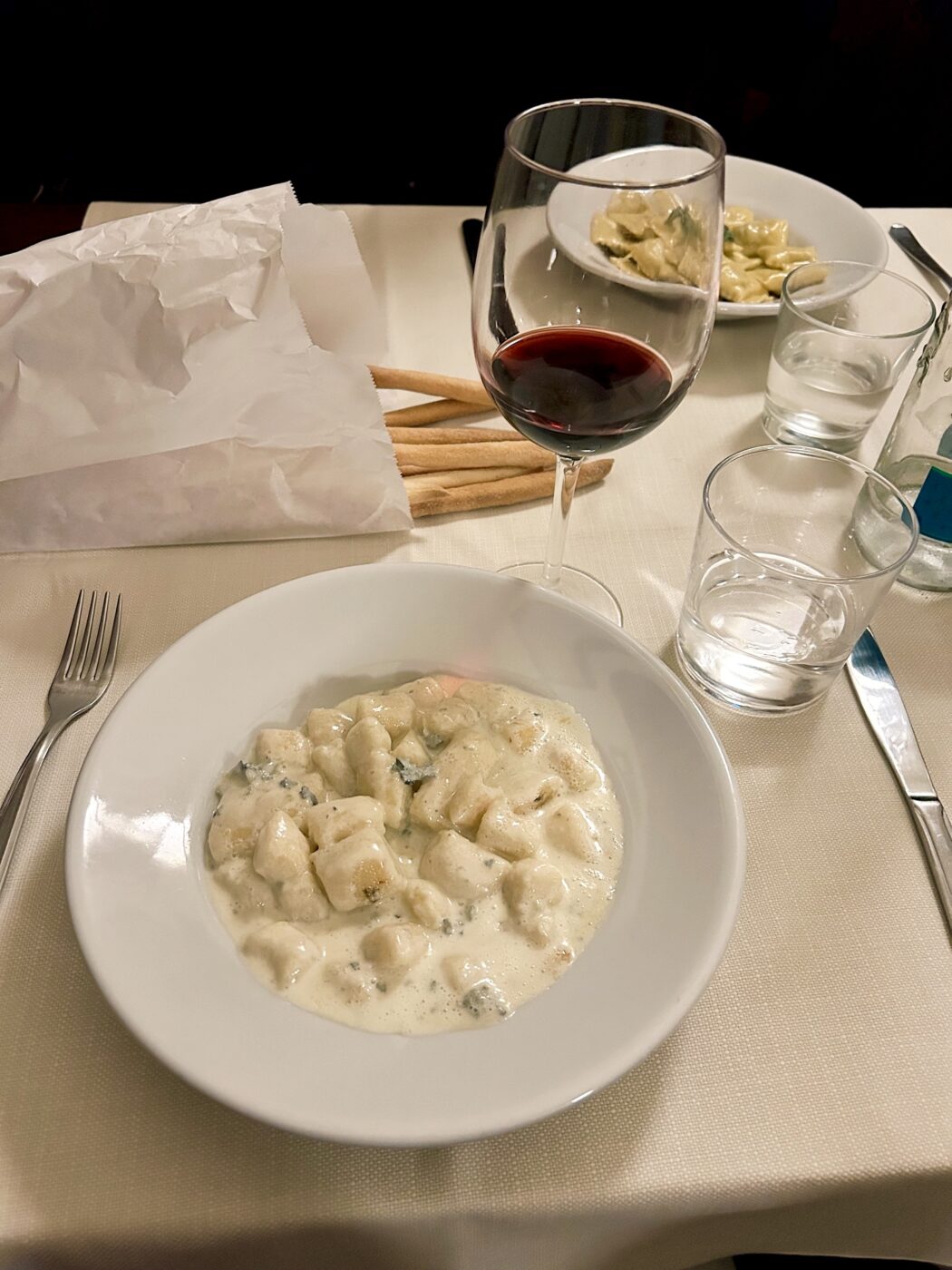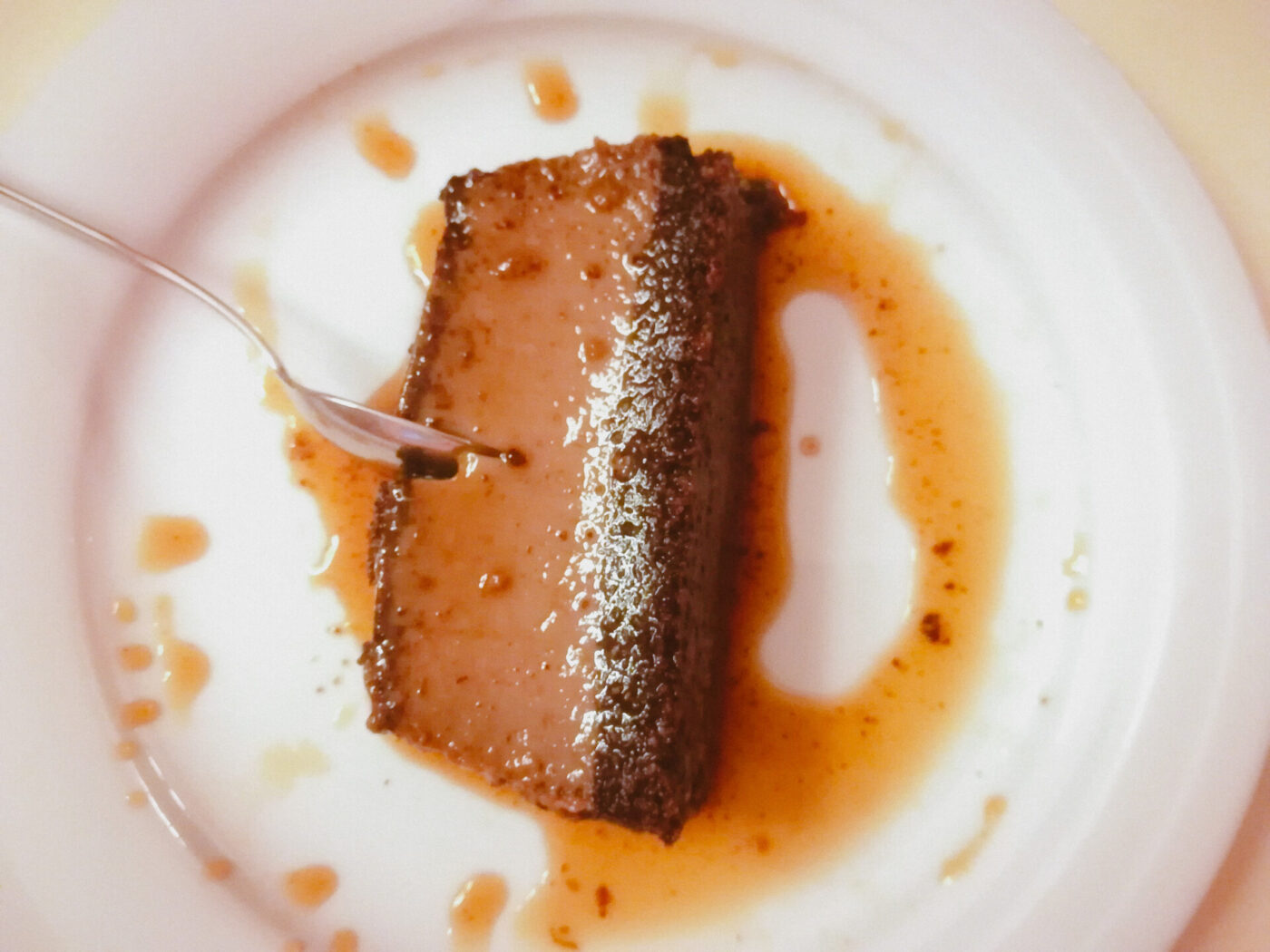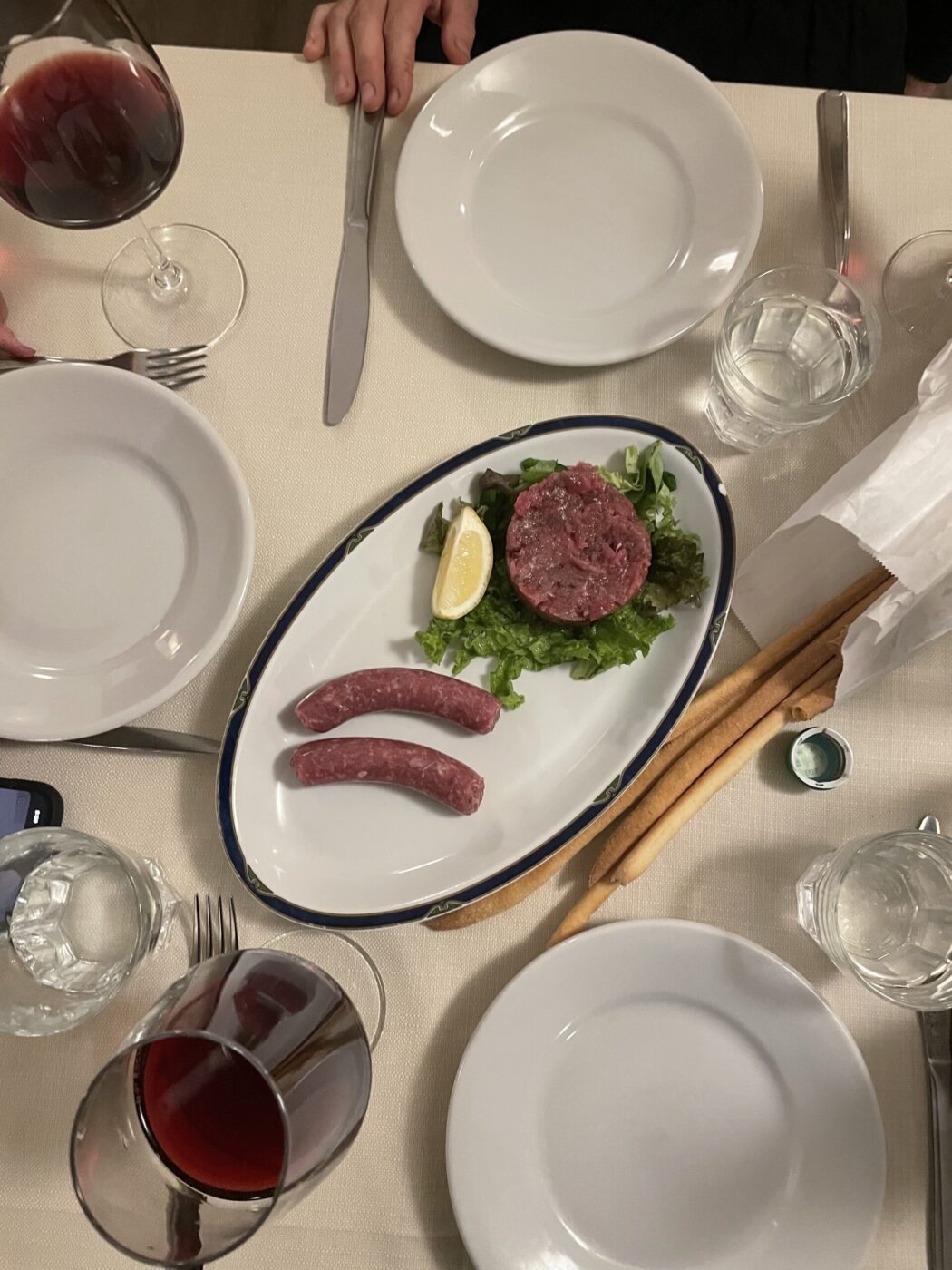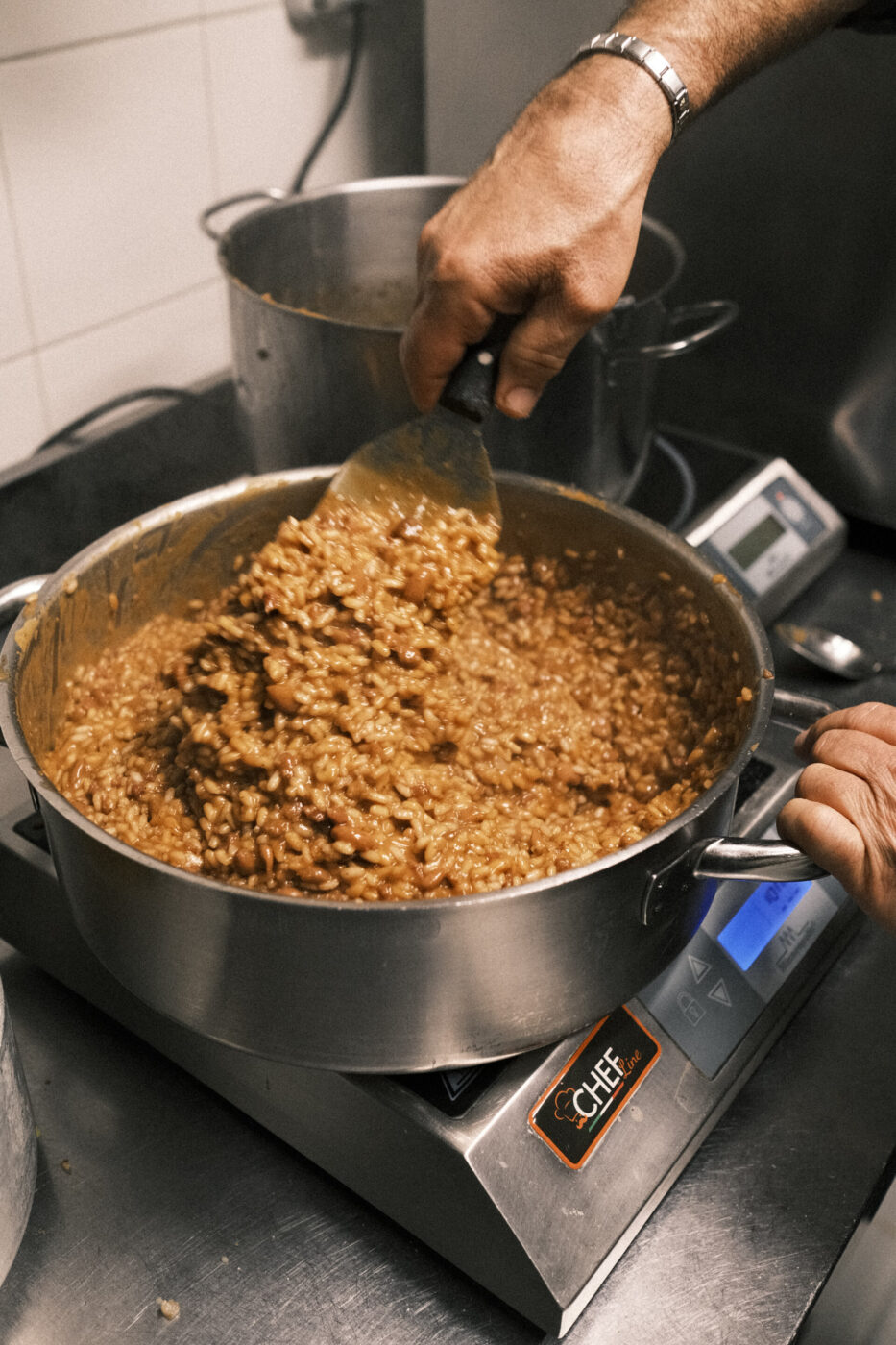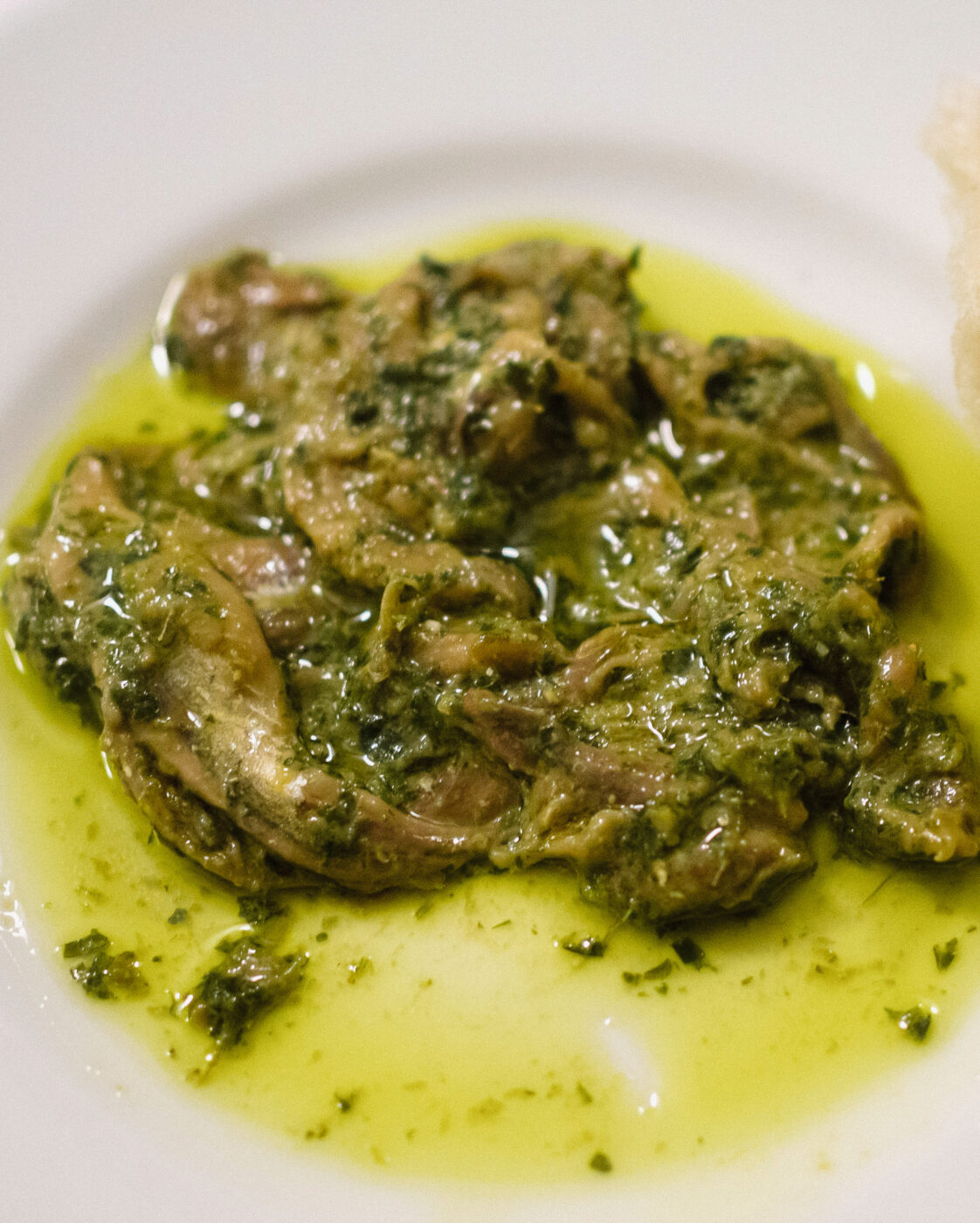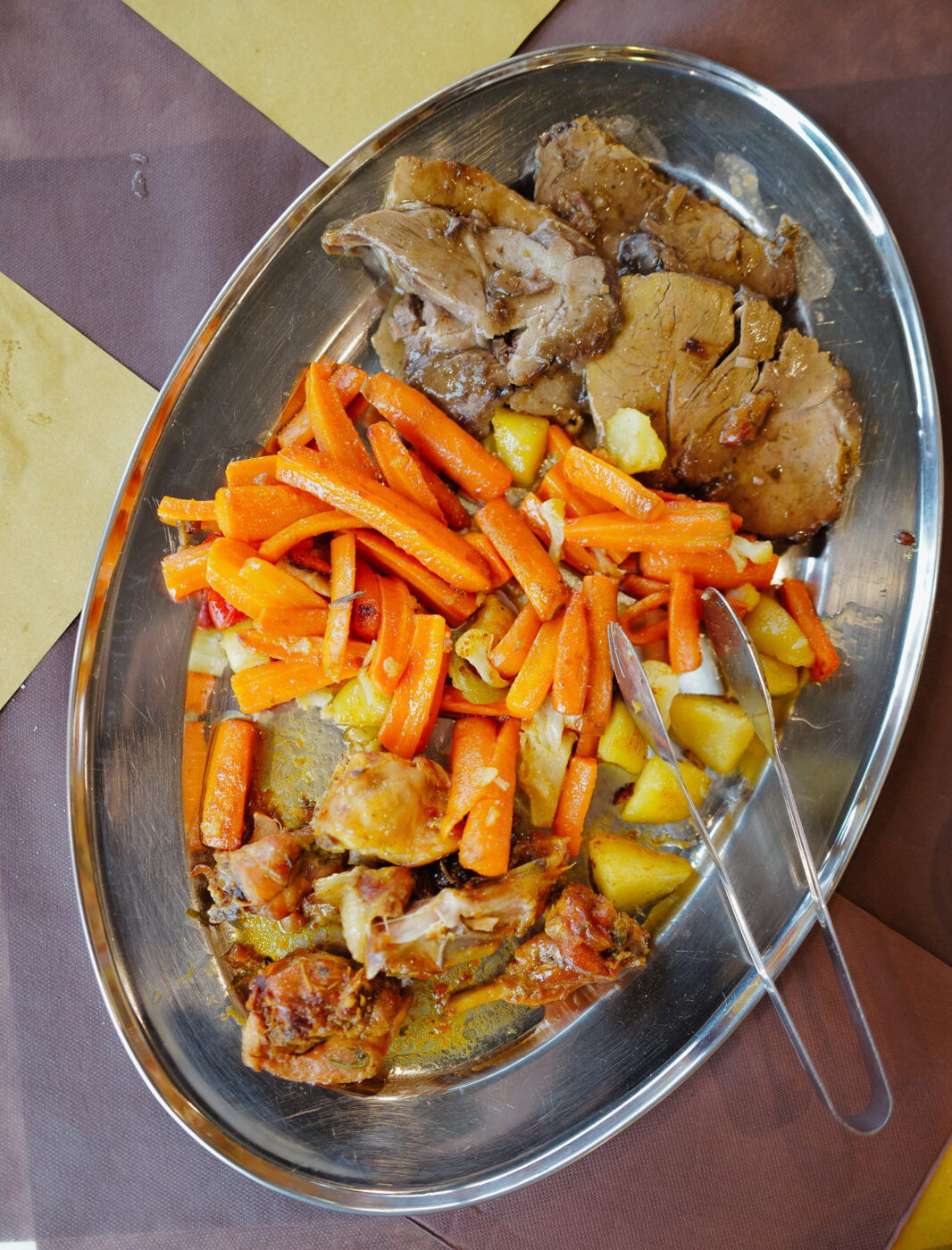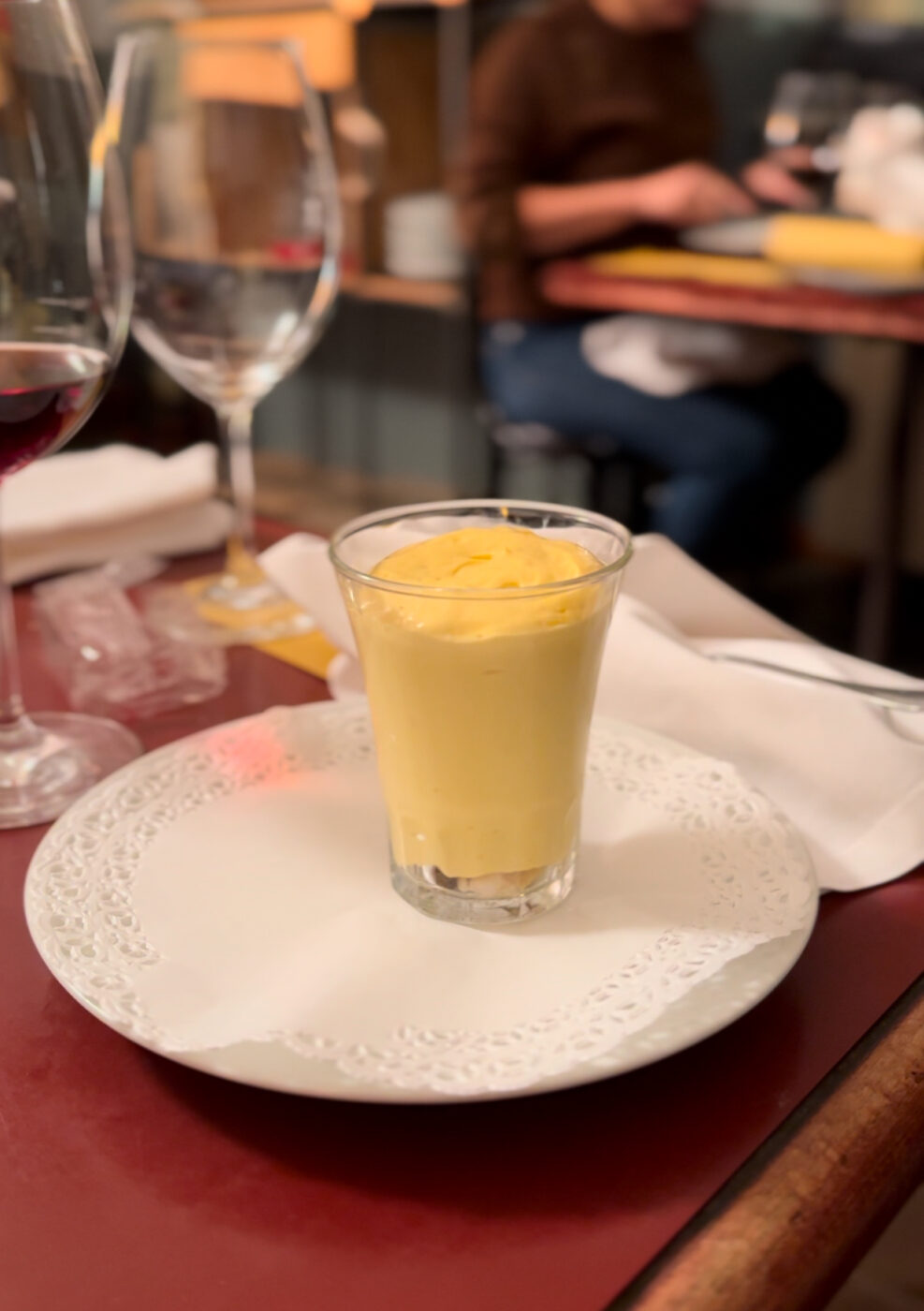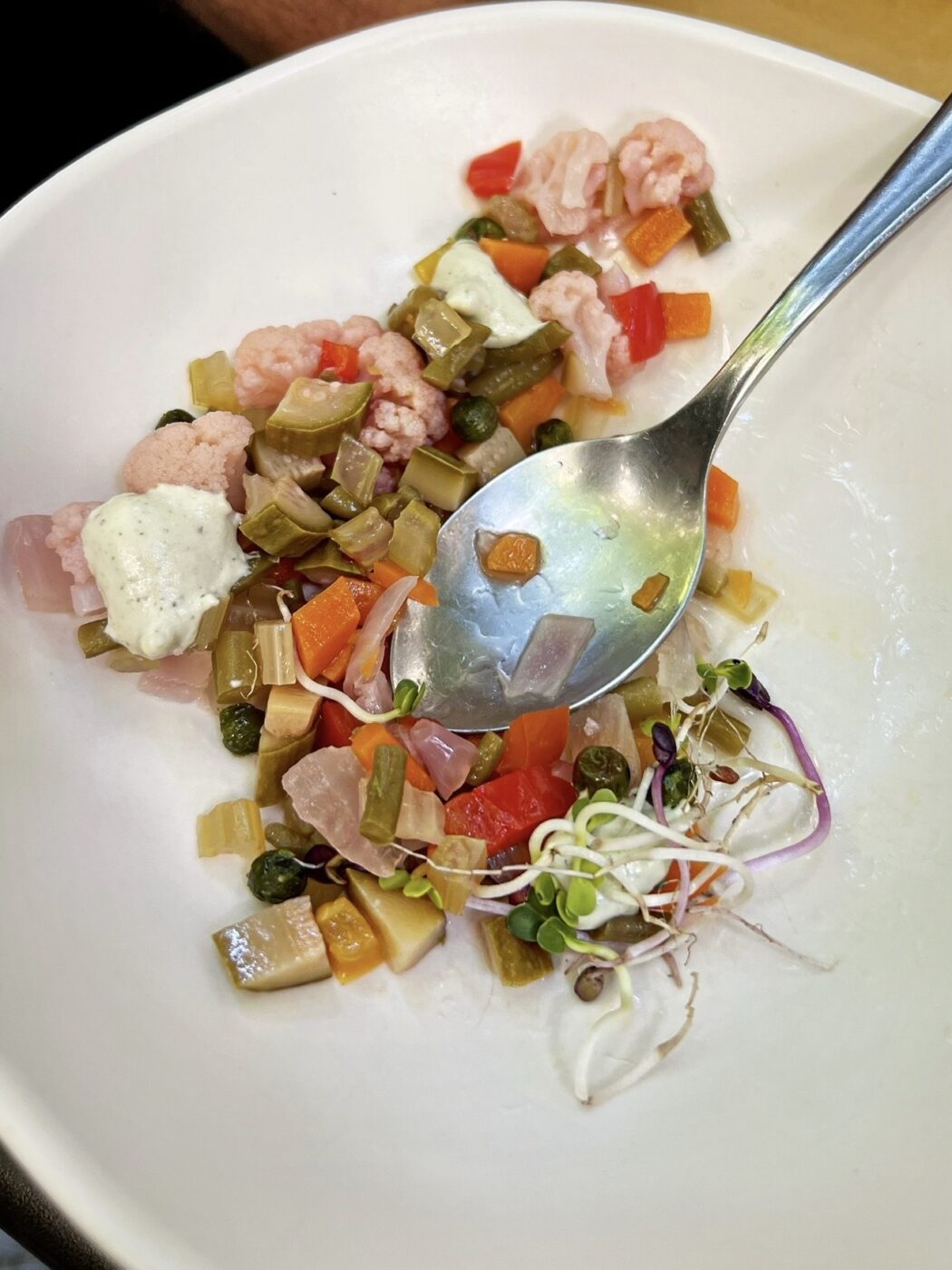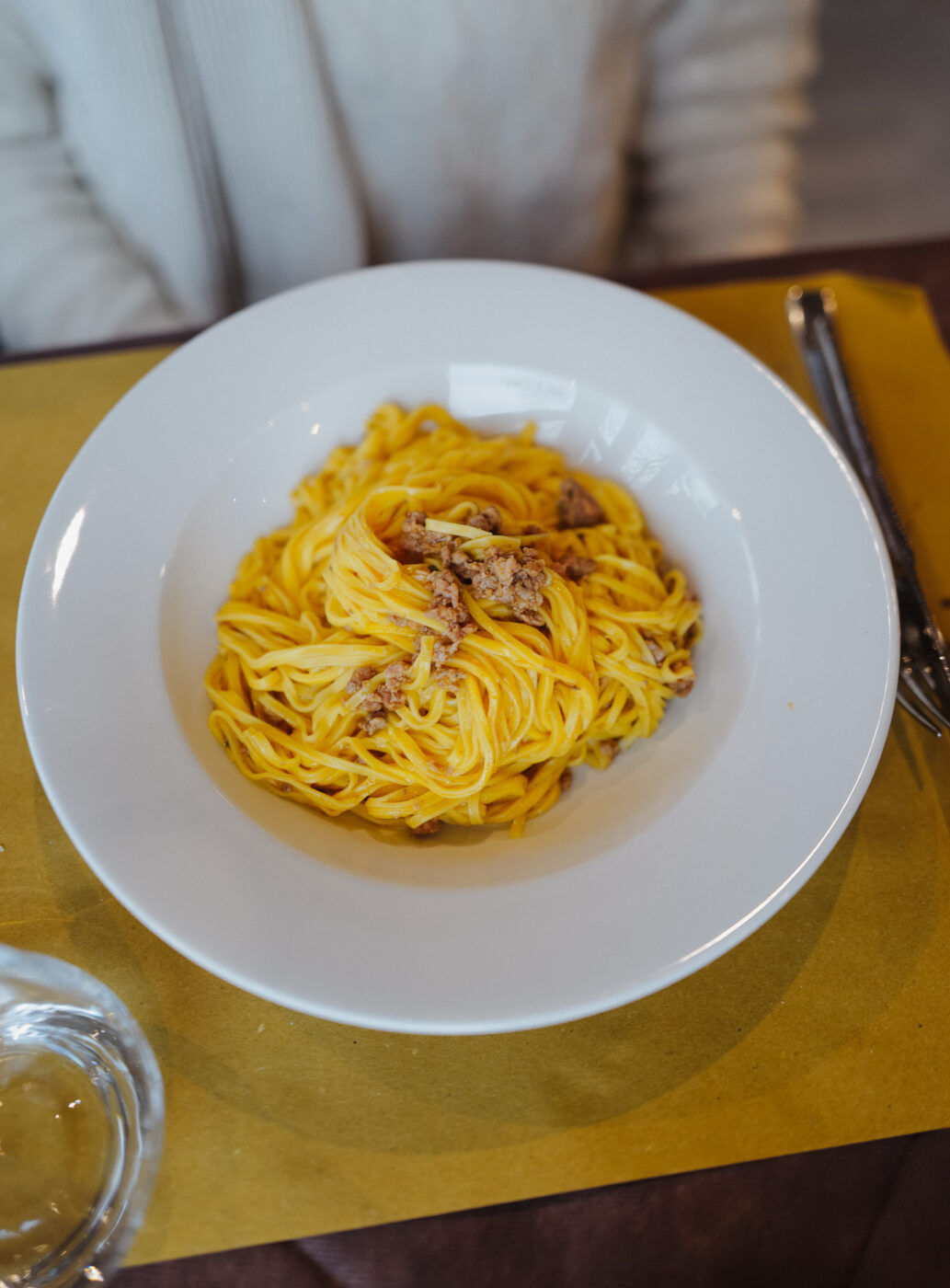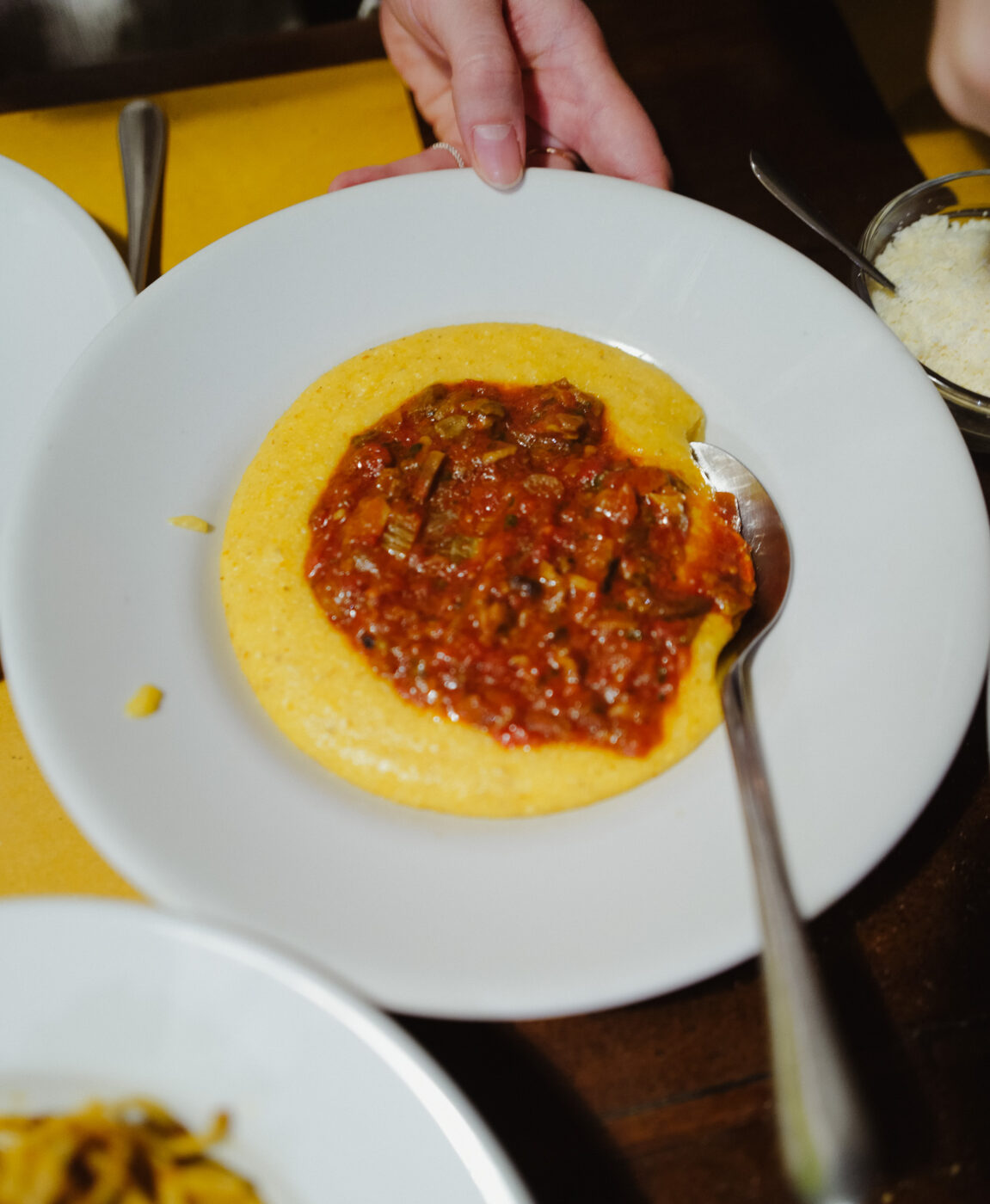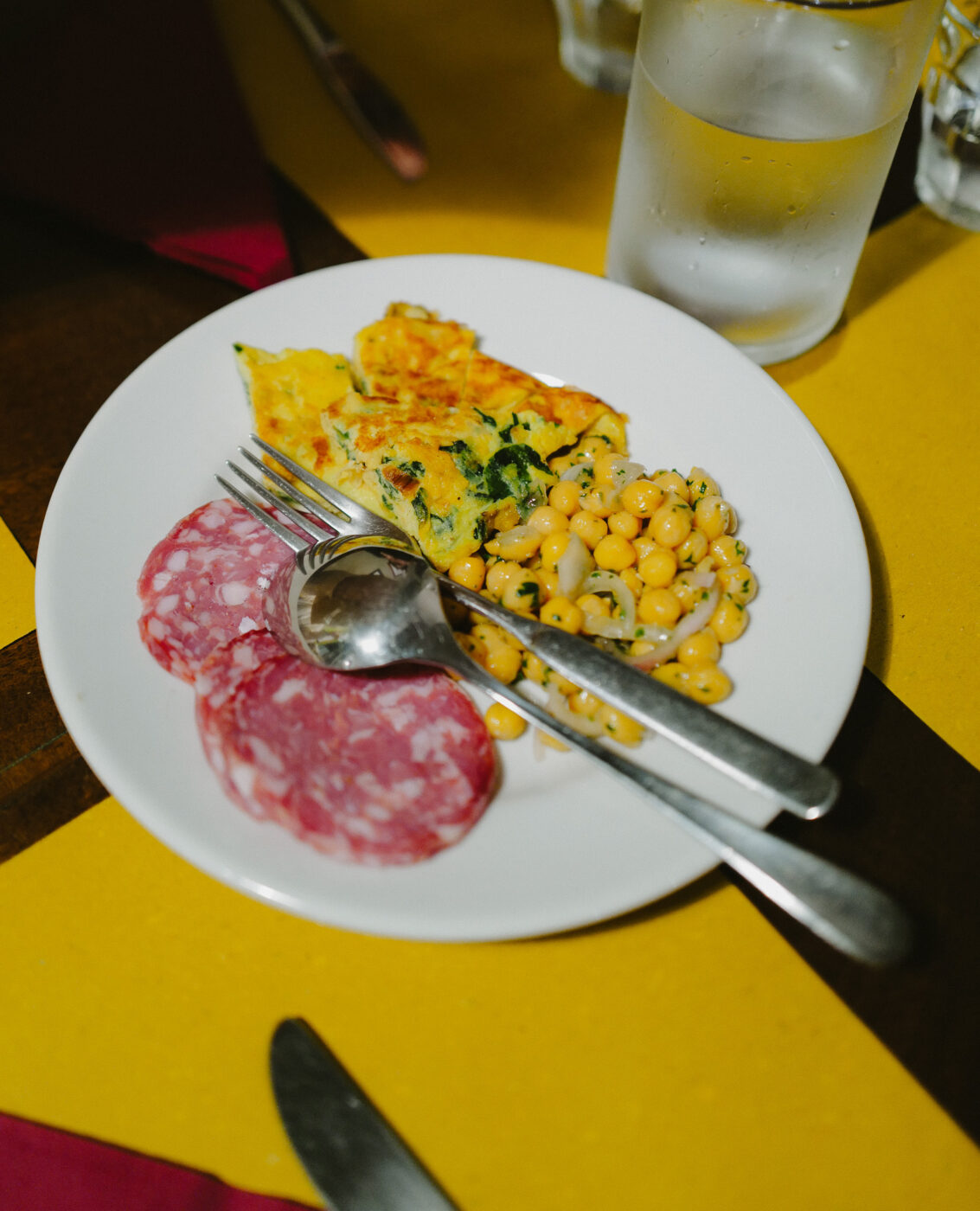Car lovers know Piedmont for Fiat; sommeliers for Barolo; and coffee-holics for the Moka… But what the region really deserves the limelight for is food. Much of the region’s culinary heritage dates back to the chefs in the House of Savoy, one of Europe’s oldest dynasties (they go back to 1003 AD) and the ruling royal family of Italy from 1861 until 1946. The Savoy family’s historic dominion over parts of France also allowed French influences to seep across the regions’ shared border, most notably in the use of butter over olive oil and the fact that cheese is often served as a dessert. But here, you’ll also find gastronomic touches courtesy of Piedmont’s other neighbor, Liguria, most notably a somewhat strange obsession with anchovies (read the “Acciughe al Verde” entry below to find out why).
Pastas are mostly fresh and egg-based–a symbol of the region’s historic wealth–and their only primo counterpart is risotto, due to the arborio and carnaroli varieties that thrive in the marshy areas around the Po River. Bread is often subbed for snappy grissini, and meat is typically beef: specifically the local, muscular razza Piedmontese breed. The aforementioned cheese here is properly swoon-worthy, with 7 DOP varieties like fresh Robiola and the soft-crusted Tomino, best when cooked in a pan until gooey. And that’s not to mention white truffles and hazelnuts, plus a drink repertoire that includes vermouth and the country’s heaviest-hitting red wines.
If all of this hasn’t convinced you of the region’s gastronomic supremacy, we’ll end with the fact that Piedmont birthed the Slow Food movement; you’ll find more protected ingredients and restaurants with their red-snail stamp of approval here than in other parts of the country–this has, perhaps, also contributed to the region’s whopping 45 Michelin-starred restaurants.
No matter if you’re already on the Piedmont-loving bandwagon or we have yet to convince you, here are 20 dishes you have to try when you’re here.
Pro Tip: Food-lovers should visit the region in September, when Slow Food holds a Cheese or Terra Madre festival (depending on the year).
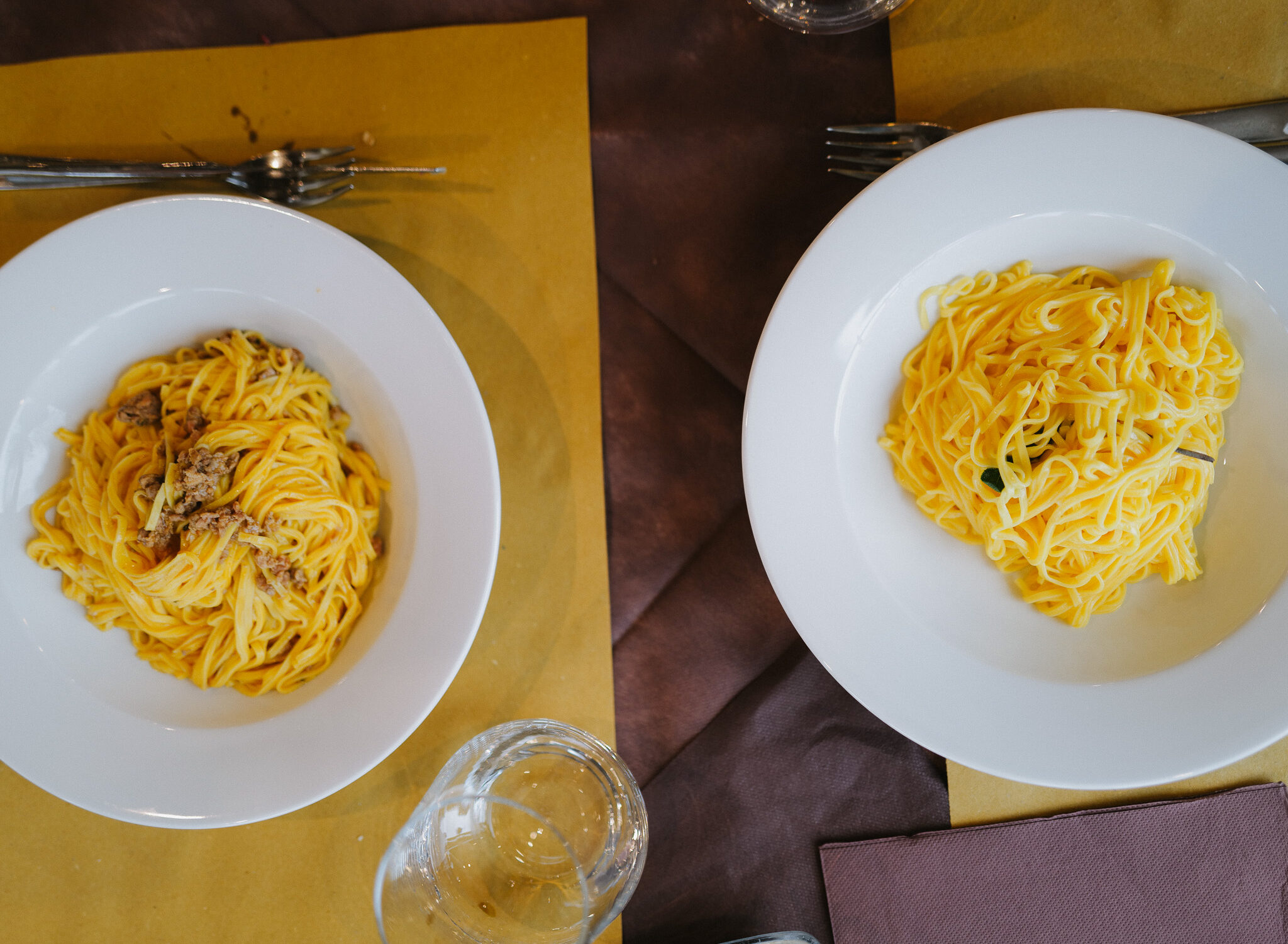
Tajarin
Agnolotti del Plin
Piedmont’s contribution to Italy’s stuffed pasta repertoire, agnolotti del plin is a fresh egg pasta filled with a mixture of minced veal, pork, and usually parmesan and greens. They are pinched into little dumplings with a movement that’s known as “plin” in the Piedmontese dialect. The tiny ravioli hail specifically from in and around the Langhe region and are flavorful enough to stand up to the area’s deep Barolo wines. Traditionally, they are served “al tovagliolo” (in a napkin) without any sauce, calling back to the way children would carry them to school for lunch or how nonne would sneak hungry grandkids some in the kitchen. You can also get them tossed in butter and sage, or, our personal favorite, with sugo d’arrosto, a rich sauce made from the drippings of a beef roast.
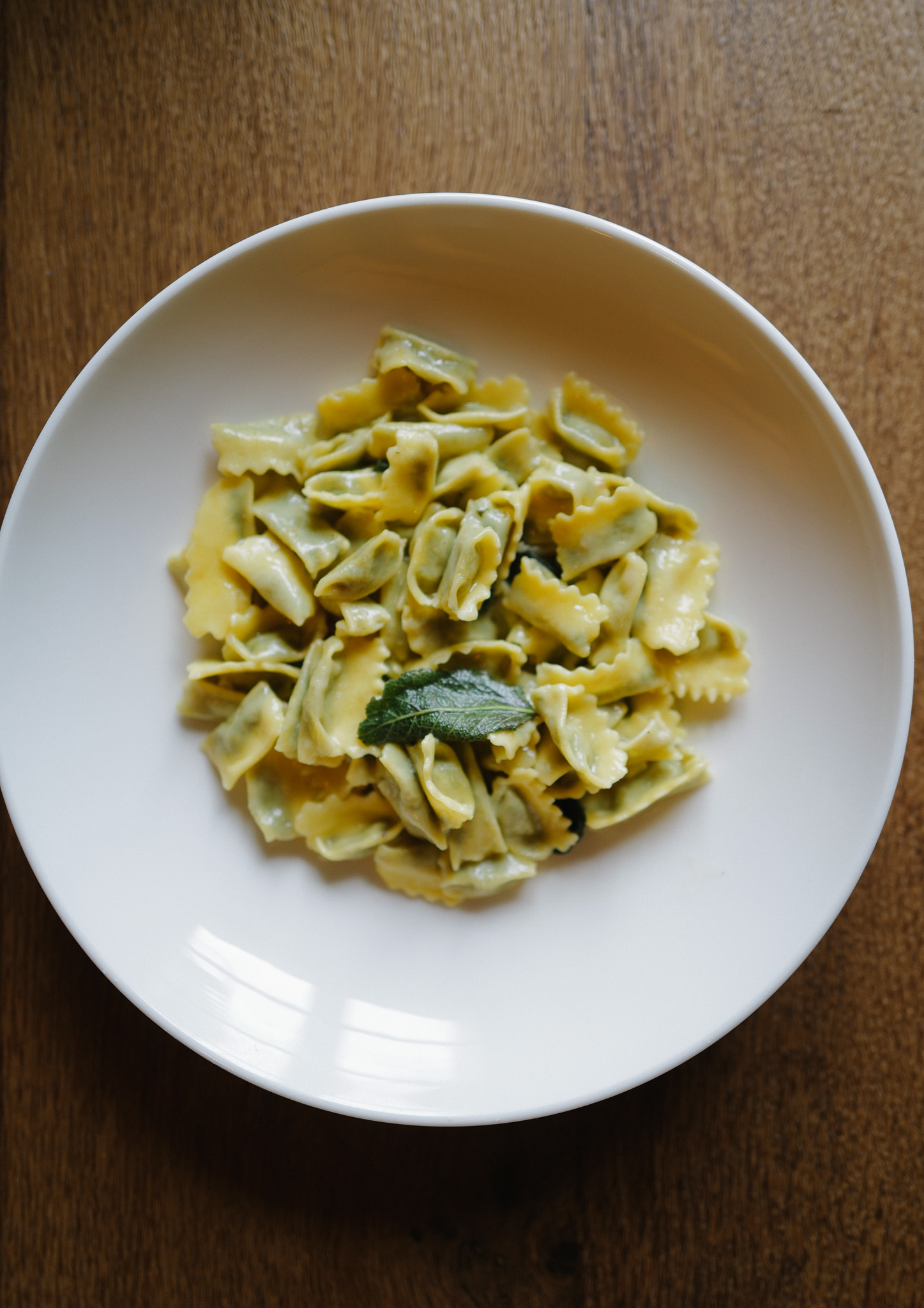
Agnolotti del Plin
Salsiccia di Bra
Made exclusively in the town of Bra, this sausage is primarily served raw. Now we know what you’re thinking, but just hear us out. Made with lean veal from young Piedmontese cattle mixed with a bit of pork fat (the ratio is about 80% to 20%), it’s perfectly safe to eat raw, and doing so actually brings out the delicate flavor that would otherwise get muted from cooking. Each butcher in town has their own secret recipe, but the meat is usually mixed with some combo of salt, white pepper, nutmeg, cinnamon, and cheese–parmesan, robiola, or toma delle langhe–and occasionally, garlic, fennel, leeks, and white or sparkling wine. Stuffed inside a natural casing of sheep intestine, the sausage is a rich pink color and protected by an official Consortium that was established in 2003. There’s much debate about salsiccia’s origins, but most sources point to nearby Cherasco’s Jewish heritage, which explains why veal (and originally, beef fat) were chosen over pork. If you do eat it cooked, it’s likely in the form of a delightfully spiced ragù that’s served atop the region’s famed tajarin.
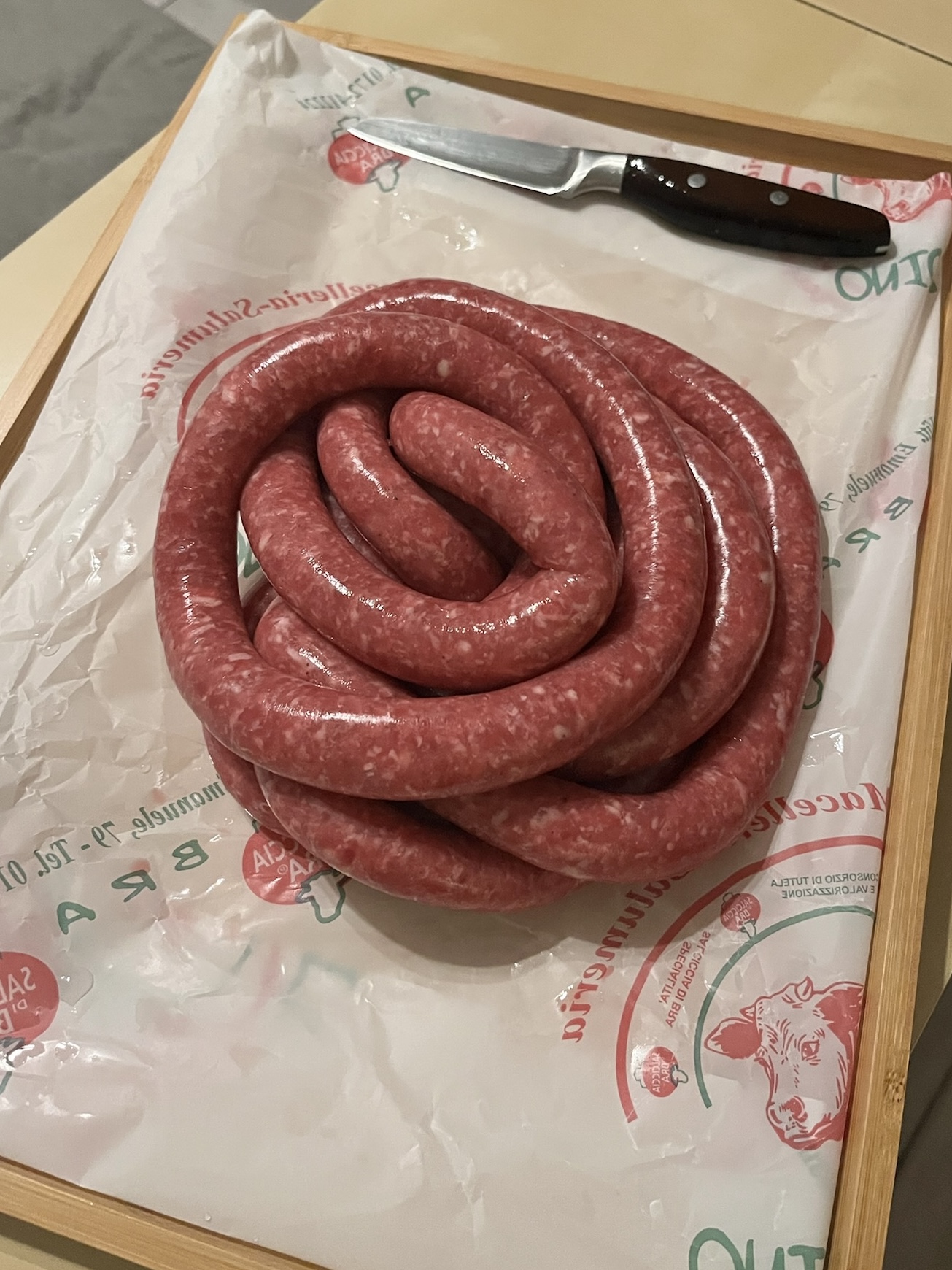
Salsiccia di Bra
Battuta di Fassona
Also in the raw meat category, battuta–Piedmont’s version of tartare–is a simply seasoned disc of raw Fassona, or razza Piemontese cattle. Mainly raised in the provinces of Asti, Cuneo, and Turin, the muscular Fassona cows yield high amounts of tender meat since they have little connective tissue. These Slow Food Presida cattle eat mainly hay and grains, which means their meat is lower in cholesterol, less marbled, and maintains a bright red color that makes for a beautiful battuta. The word “battuta” roughly translates to “beat”, and the meat must be “hand beaten” with a super sharp knife so it doesn’t tear or lose its juices. It’s never chewy and topped only with a bit of olive oil and salt right before serving, so nothing tampers with the flavor of the meat. (Tartare, on the other hand, is usually seasoned more heavily, but we find that in this case, simple is better.)
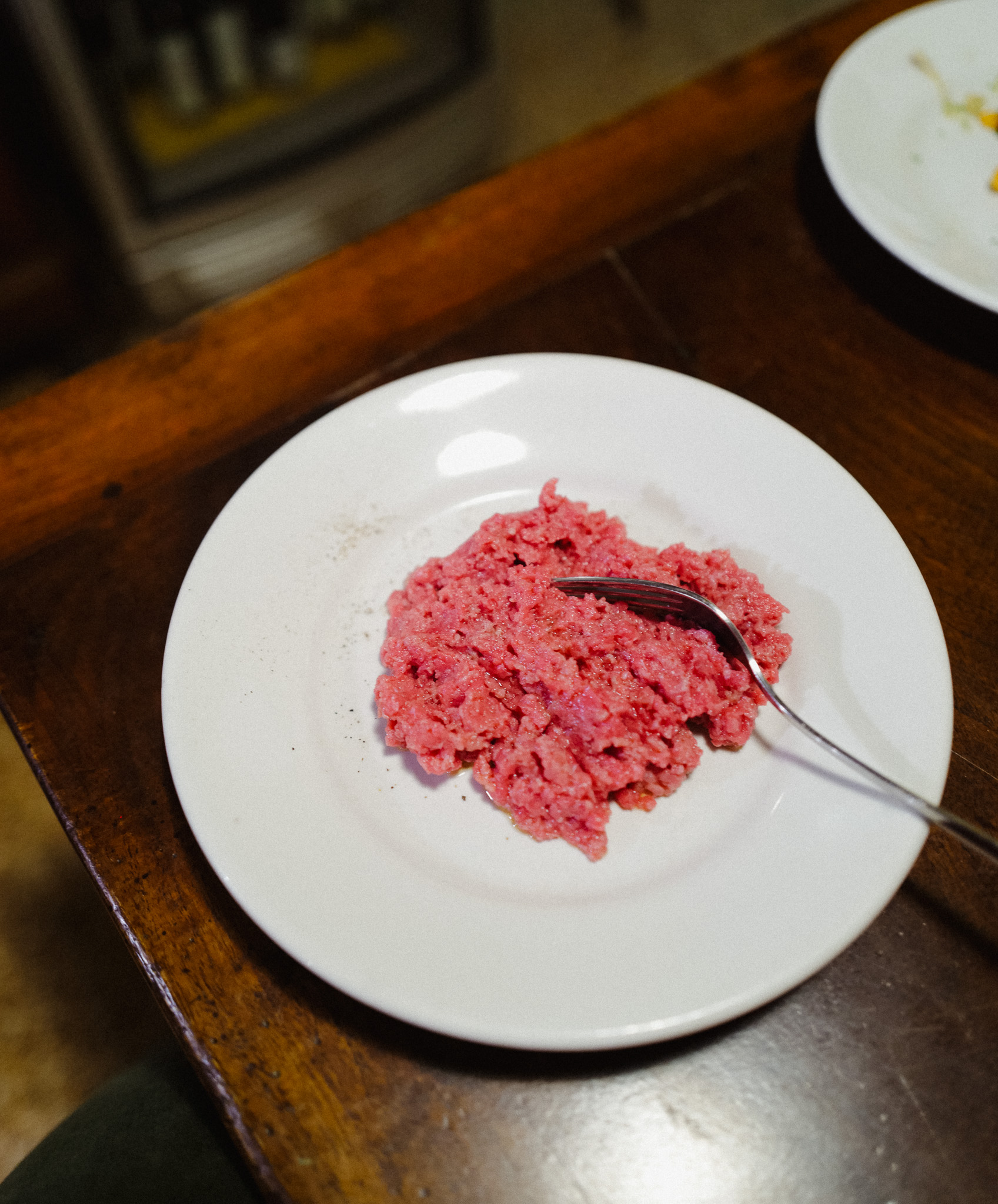
Battuta di Fassona
Tajarin al Tartufo Bianco
Although the name might sound foreign to you–and we can understand why, given the Italian alphabet doesn’t technically have a “j”–you’ve likely had tajarin under the guise of tagliolini. The shape, and dialectal pronunciation of tagliolini, hails from the rolling, Barolo-producing hills of the Langhe region. The bright yellow color of these noodles comes from the pasta’s astronomically high egg content–40 yolks per kilo of flour, to be exact. Historically, Piedmont was a wealthy region, and the number of egg yolks in the pasta was a flex, creating a dough as rich as the aristocrats who ate it. Similarly rich is the best pairing for this paper-thin shape: Tartufo Bianco d’Alba, considered the most famous white truffle in the world and found only in the Langhe, Roero, and Asti-Monferrato. It might cost a pretty penny, but it’s certainly worth it. The soft noodles also pair well with butter and sage, butter and porcini, pomodoro, or a light ragù made out of nutty salsiccia di bra.
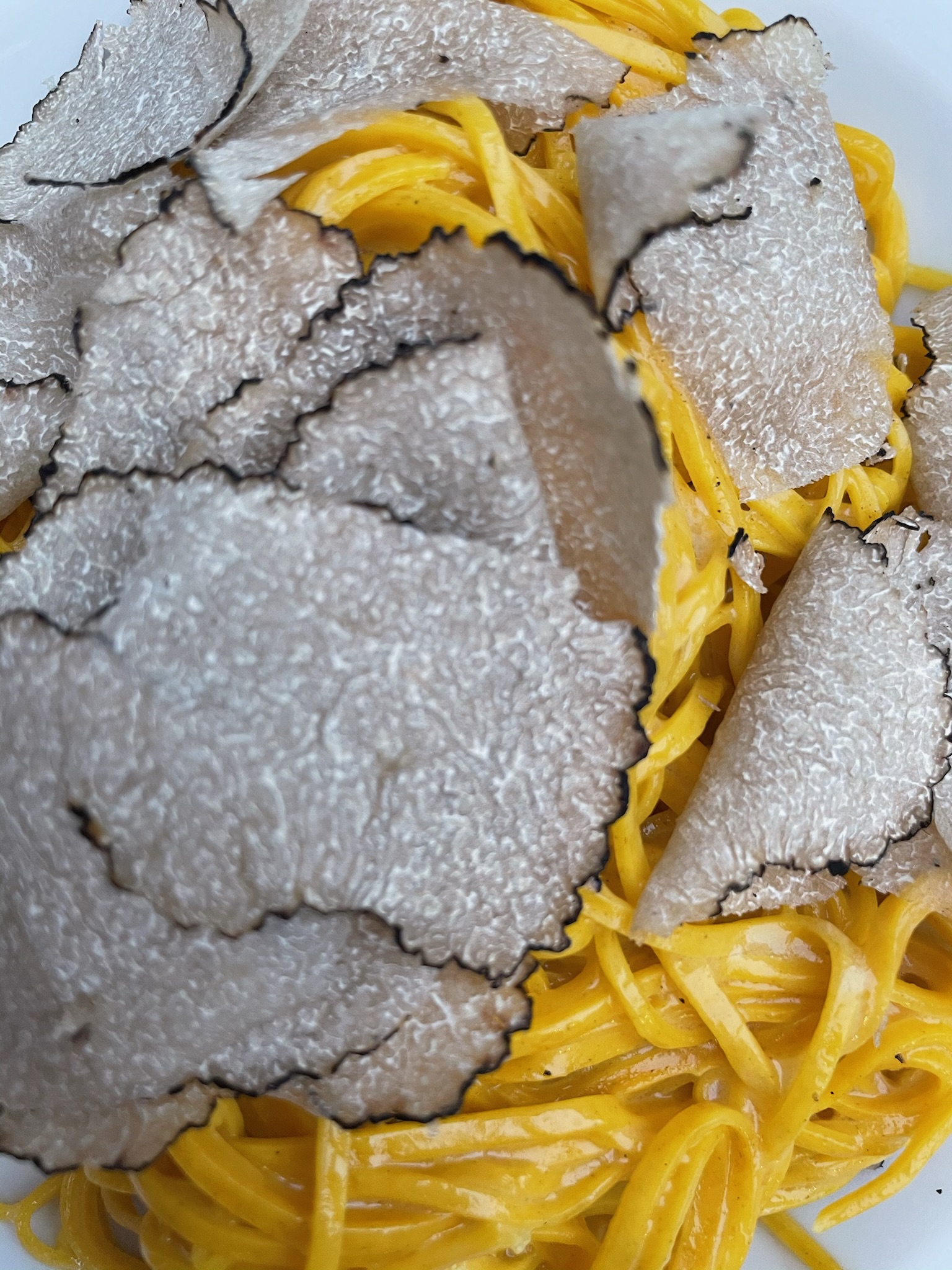
Tajarin con tartufo from Osteria del Boccondivino
Panna Cotta
Literally translating to “cooked cream”, this delicate dessert is made of cream, milk, sugar, vanilla, and gelatin formed into a smooth, jiggly mound. Nowadays, you’ll find all sorts of flavorings and toppings, from fruit and chocolate to mint and alcohol, but it really is best in its simplest form. Local legend says the ultra-creamy dessert was invented in the Langhe region in the early 1900s by a Hungarian woman who used the abundance of cream from the razza Piemontese, likely thickening it with fish bones. Others claim it is merely an adaptation of similar puddings, like the Sicilian biancomangiare with almond milk or the French crème bavaroise. Regardless, this dolce is one that’s transcended Piedmont’s borders, making its way into nearly every Italian region and onto the menus of Italian restaurants abroad–and boy are we glad.
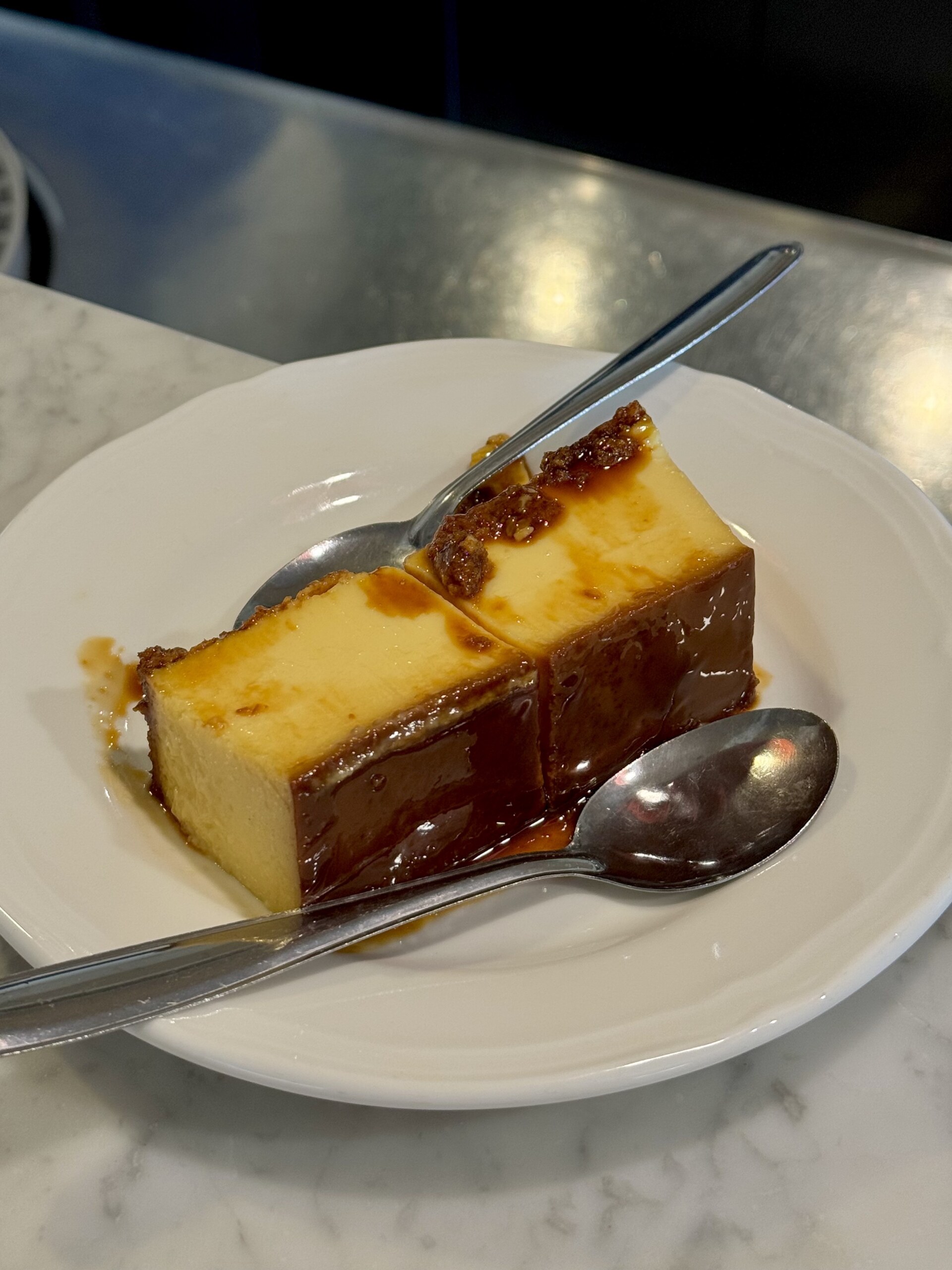
Panna Cotta
Vitello Tonnato
Enter surf and turf alla Piedmontese. This popular antipasto pairs petal-like slices of boiled veal and a mayonnaise-like sauce of tuna, capers, anchovies, and lemon. The veal is buttery in texture, and the dish is served cold or lukewarm, making it especially delightful in the warmer months. It likely derives from the French vitel tonné, whose original form was simply veal boiled until it was “tanné”, French for “tanned”. Other historians say that this boiled veal was sometimes preserved in oil, creating “vitello ad uso tonno” (“veal used as tuna”). It wasn’t until 1862 that veal and actual tuna were paired together, in dermatologist Angelo Dubini’s cookbook–published anonymously for fear of the criticism he’d receive from his medical colleagues for breaking the unspoken rule of combining fish and meat. Artusi, however, hopped on board, calling for veal with a sauce of anchovies, tuna in oil, lemon, oil, and capers in his famed 1891 tome. Whatever the origins, today, you’d be hard pressed to find any restaurant that doesn’t serve one of our editorial team’s favorite antipasto.
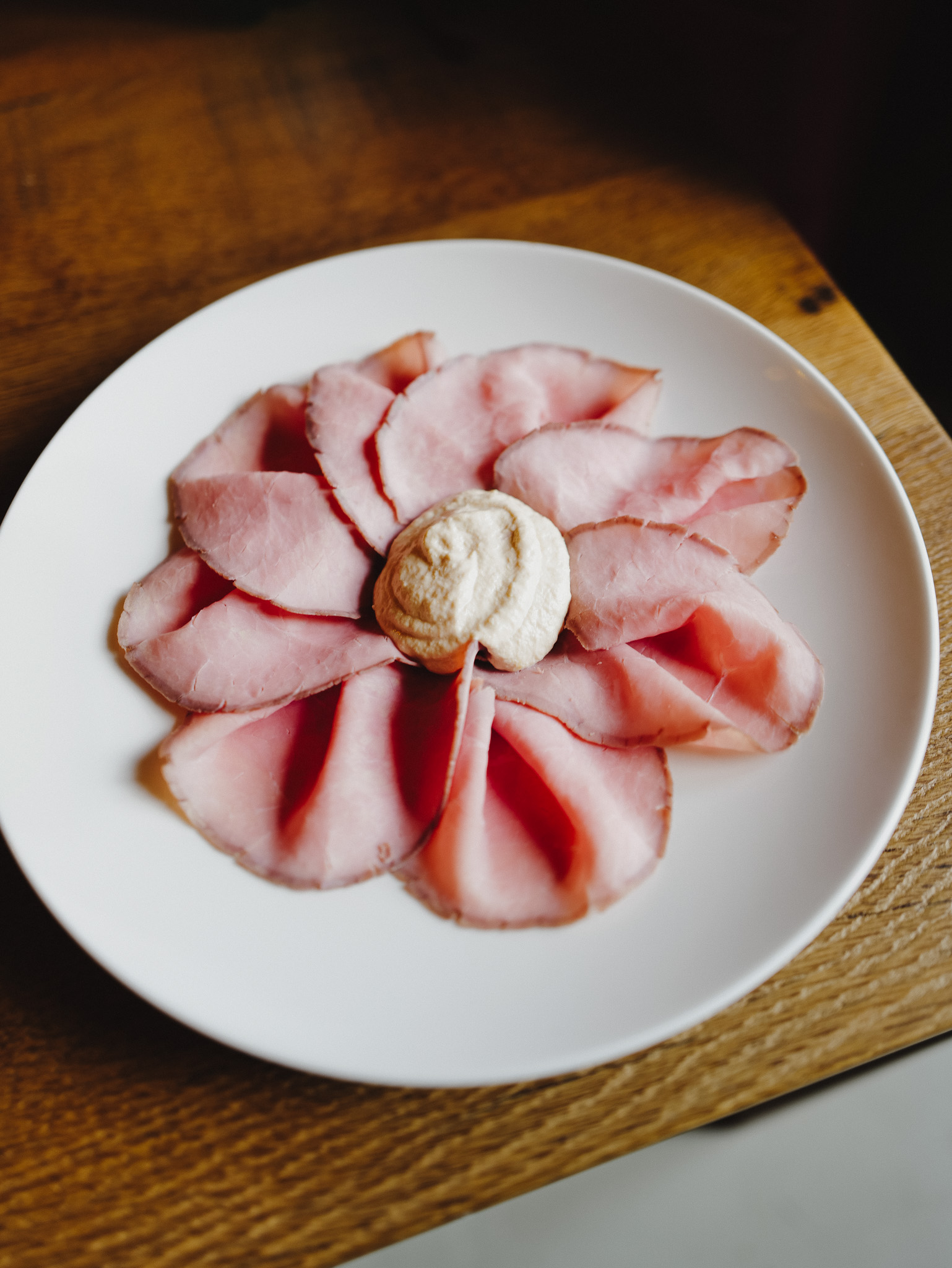
Vitello Tonnato
Insalata Russa
Piedmont’s version of a potato salad, insalata russa is a cold antipasto of the tuber, carrots, peas, and other veggies mixed with mayonnaise and sometimes enriched with anchovies, capers, eggs, and tuna. (The Piedmontese really like their mayo.) Though it’s on nearly every restaurant menu year-round, the “salad” is most often made at home for the winter holidays, when it can be dyed bright red thanks to beets; red is “rusa” in Piedmontese dialect. The dish was likely invented by a Piedmontese chef to honor the Tsar of Russia, who was visiting the Kingdom of Savoy: he topped typical Russian ingredients–like potatoes and carrots–with a white cream that was meant to symbolize snow. Other theories point to the salad’s similarities with the salat olivier (Oliver Salad), created by French/Belgian chef Lucien Oliver in Russia in the mid-19th century at Hotel Hermitage in Moscow. Either way, it’s strongly taken hold amongst Piedmont’s antipasti, and similar variations of this “Russian salad” can be found in other European countries as well; in Scandinavia some even refer to it as “Italian salad”.
Bagna Cauda
This is certainly not the dish you want to eat on a first date (or maybe even within the first year of dating). Bagna cauda, also written la bagna caoda, is a simple sauce made of garlic and desalted, deboned anchovies slowly cooked in olive oil. Woof. The “hot sauce” is prepared in a pot called a “dian“, then served in a terracotta container called a “fojòt” that’s lit by a small candle to keep it warm, almost like a fondue. Similarly, you dip all sorts of seasonal veggies into the sauce, and it is enjoyed most often in the season of vendemmia. Bagna cauda, in fact, originated during the harvest season in the provinces of Asti, Alessandria, and Cuneo, when workers would gather at the end of the day to eat something similar out of communal terracotta pots warmed on the fire’s embers. The dish bears resemblance to the French “anchoiade”, the recipe for which was brought from Liguria and Provence by merchants of Asti, along with anchovies and salt. Today, many families and restaurants add butter to soften the garlic, and it’s best paired with one of the region’s hearty reds. And a breath mint.
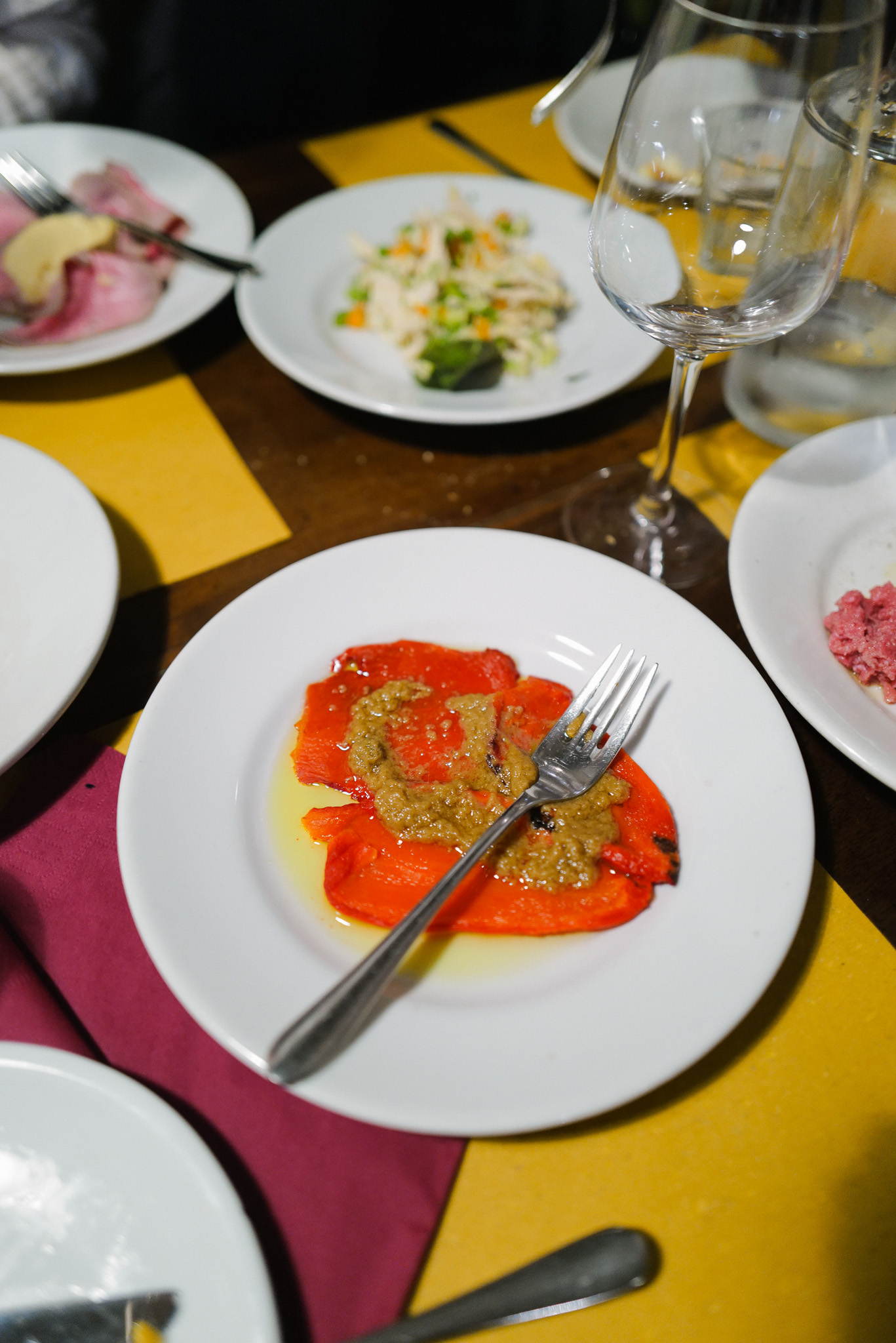
Bagna Cauda
Gnocchi al Castelmagno
One of the greatest pairings to ever exist, this Piedmontese primo would be number one if this list was ranked–and we’re not alone in this declaration. Castelmagno, specifically Castelmagno d’alpeggio, is a semi-hard, naturally blue, raw milk cheese that’s a clear symbol of Piedmont’s Alpine heritage and perfect in about every way. Made primarily with cow’s milk with small additions of sheep’s or goat’s milk, the Slow Food Presidium cheese is served either young or aged. It’s the former that gets combined with fluffy gnocchi, where it becomes ooey, gooey, and dreamy. According to self-proclaimed cheese enthusiast Valeria Necchio, the ivory-white castelmagno dates back to at least 1277, when a court record states that it was required as payment to the Marquis of Saluzzo for the use of pasture lands in Cuneo. Today, we’d gladly accept gnocchi al castelmagno as a form of payment–just don’t tell our boss.
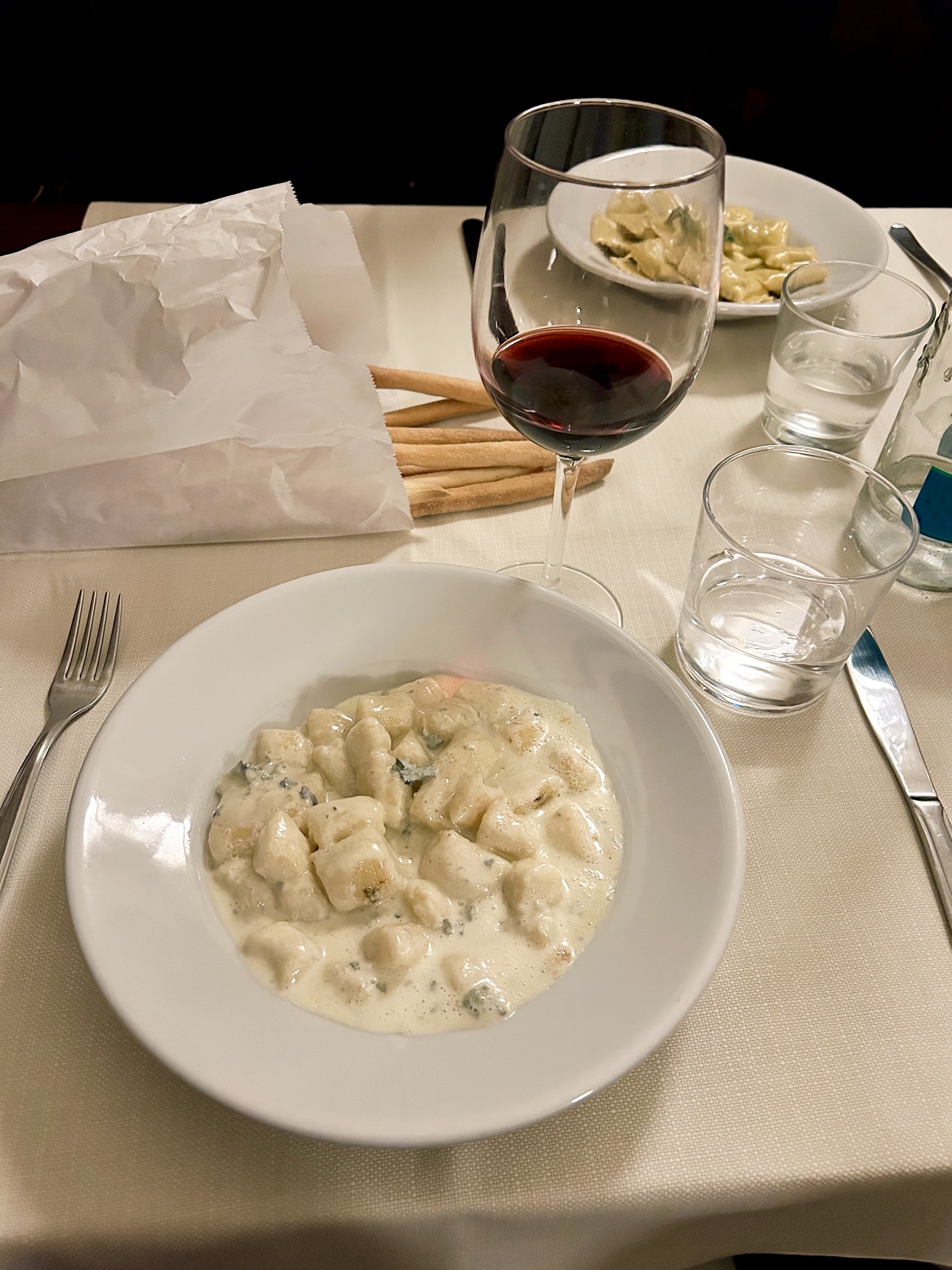
Gnocchi al Castelmagno
Bunet
The oldest dessert from Piedmont, the bunet (also spelled bonet) is a crème caramel made with cocoa, amaretti biscuits, milk, sugar, and eggs, and sometimes is flavored with rum or amaretto. Records date the bunet back to the 13th century when it was served in medieval banquets in the Langhe–though this version omitted cocoa, since it wasn’t introduced to the country until the 15th century. “Bunet” comes from the Piedmontese word for “hat”, which could relate to the copper mold used for its preparation–the bonèt ëd cusin-a (a “chef’s hat”)–or because it was served at the end of a meal, the way the hat is the last thing you put on before leaving. This jiggly dessert is a must try.
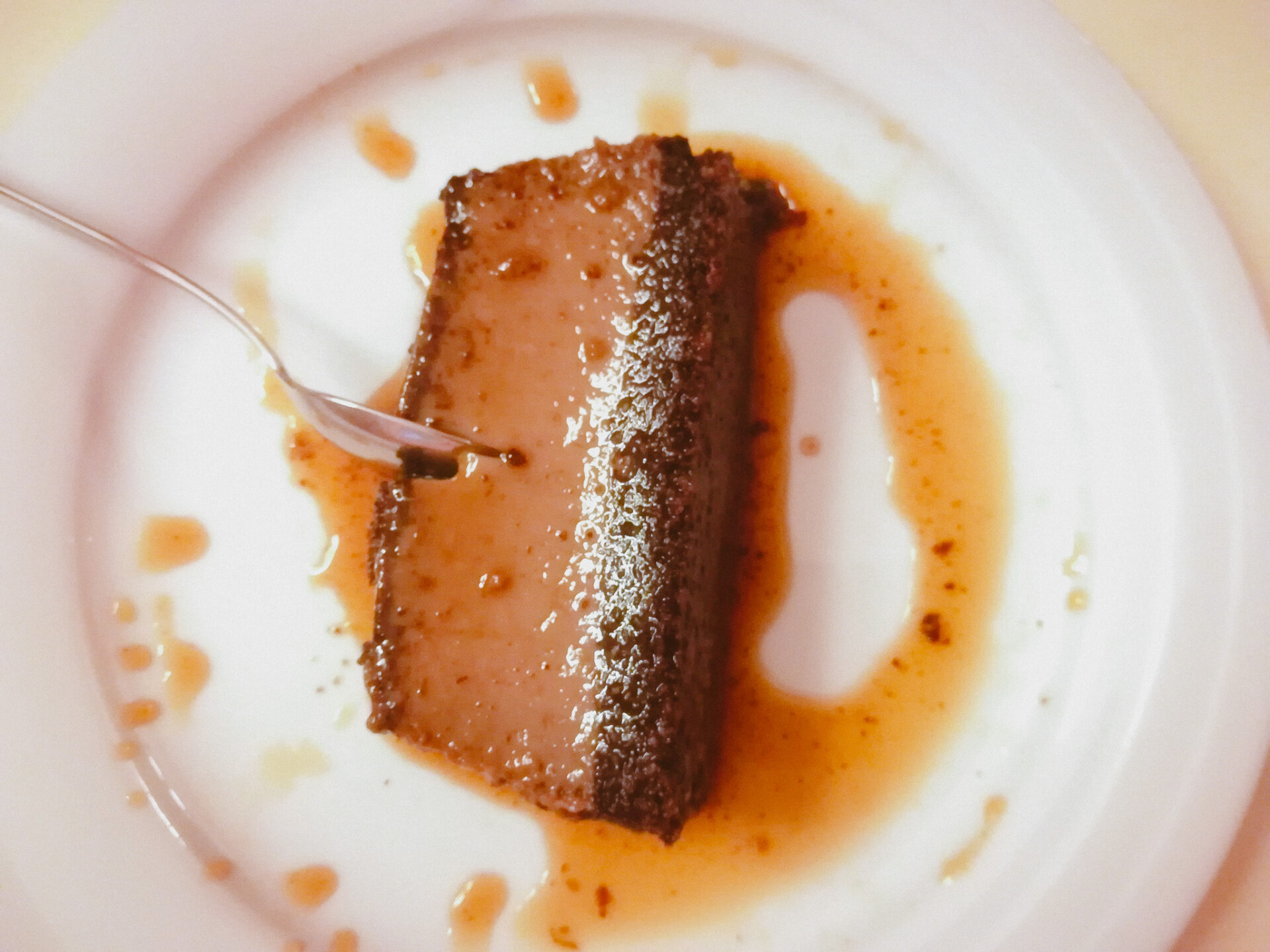
A slice of Bunet; Photo by Popo le Chien - Own work, CC BY-SA 4.0
Grissini
One of the joys of eating in Piedmontese restaurants is the cup filled with fresh grissini that’s placed on your table–and we’re not talking about the soft fluffy “breadsticks” prevalent in Italian American restaurants. Grissini are thin, snappy, unflavored sticks of just flour, water, and maybe olive oil, usually dusted with cornmeal and sometimes up to half a meter long. The most believable origin story says they come from the House of Savoy in the 1670s, when local baker Antonio Brunero invented them to help cure young Duke Vittorio Amedeo II’s digestive issues (relatable). The Duke went on to defeat the French–who had long held Turin under siege–and be crowned King of Sicily, and locals credited the breadsticks. Napoleon so loved grissini that, in the early 19th century, he literally founded a courier service between Turin and Paris just so he could have fresh “les petits batons de Turin” (“little batons of Turin”) delivered whenever he wanted. Whether or not they actually have magical properties, we’re addicted.
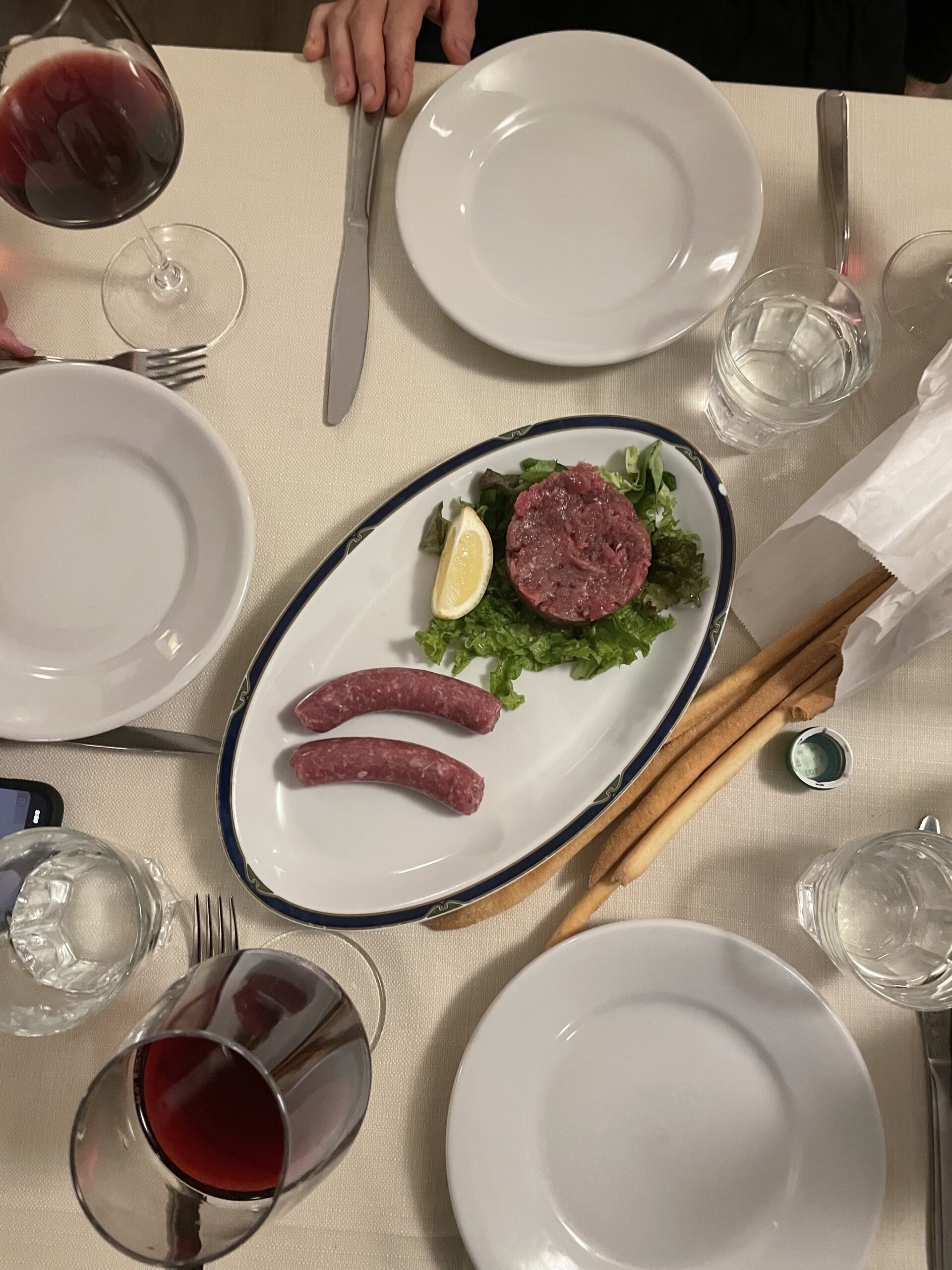
Grissini; Photo by Marie High
La Panissa Vercellese
When you think of Italian food, I’m sure that rice isn’t at the top of your list. But in Piedmont, rice is actually the region’s primary crop, so much so that it helps make Italy Europe’s largest producer of rice today. We have the Po to thank–a 652 km (405 mile) long river that cuts right through the region–combined with the humid, temperate climate and fertile alluvial soil. Rice came from India and Southern China via trade to Spain and then to the Kingdom of Naples in the 15th century, where it gradually spread north; by the 19th century, over 250,000 hectares of Piedmont’s marshy wetlands grew mostly Carnaroli and Arborio varieties. These two short grains lend themselves perfectly to risotto, and risottorie, restaurants that specialize in the primo, are dotted all around the region. You’ll find risotto mixed with all sorts of things: mint, peas, Barolo, cheese, truffles, sausage, and even carbonara and coffee. The grains also headline in la Panissa Vercellese–not to be confused with Liguria’s panissa–a type of hearty risotto from Vercelli, Piedmont’s capital of rice. Dried beans are first stewed with onion and pork fat until plump, and then cooked with local rice (usually arborio) and salame d’la doja (salam d’la duja in Piedmontese), a pure pork salame preserved in fat inside a “duja” (Piedmontese for jar). The risotto finishes cooking with a glug of Barbera wine, which imparts a light red hue.
The plains of Vercelli, Novara, and Alessandria also grow Sant’Andrea, Baldo, Balilla, Vialone Nano, Roma and, more recently, black Venere rice varieties, and you should certainly pick up a bag of each.
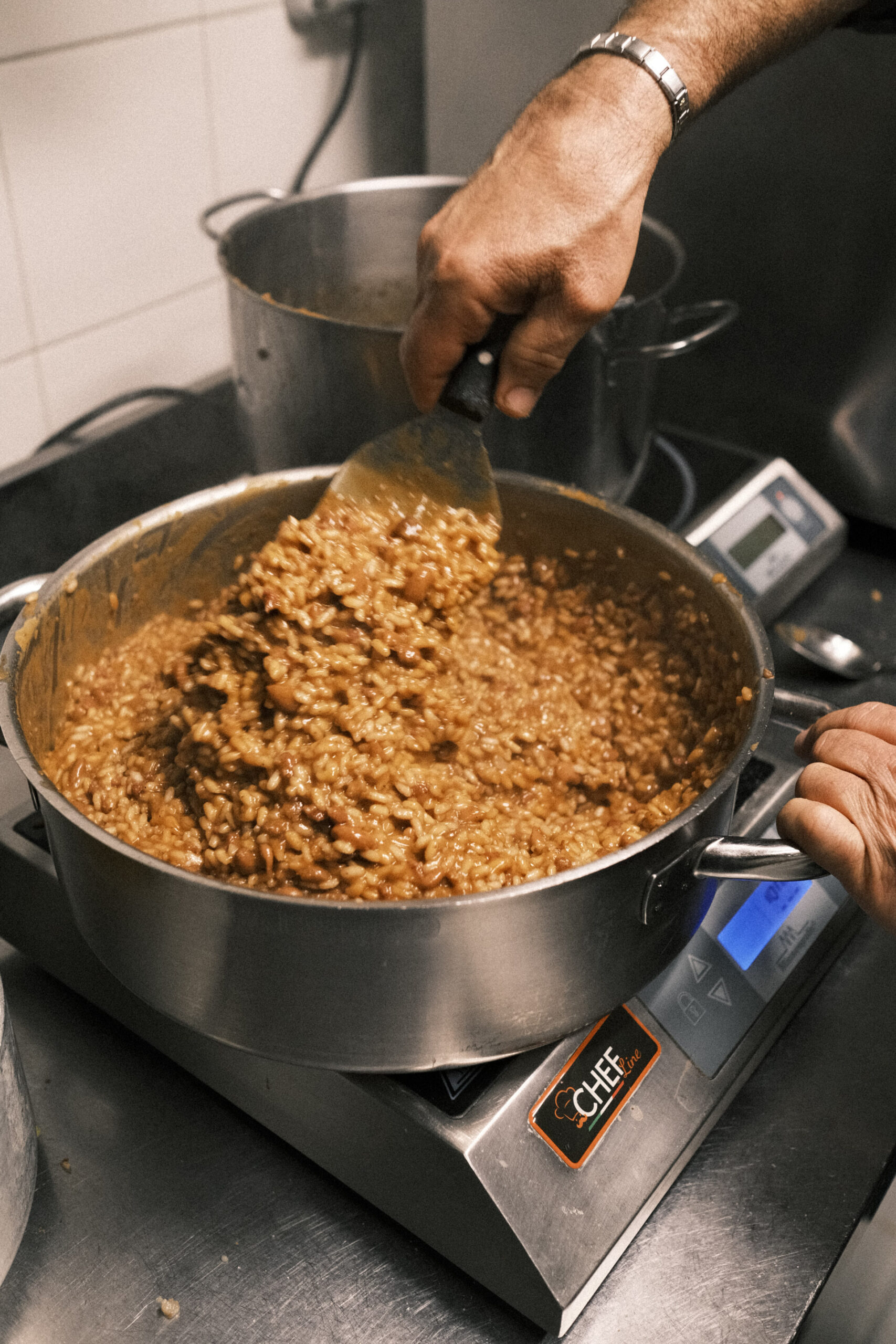
Panissa; Photo by Tommaso Serra
Baci di Dama
If you go up to just any counter in Italy and order “baci di dama”, “Lady’s Kisses”, you might get a glass of water thrown in your face, but here in Piedmont, you’ll receive one of the region’s sweetest desserts: two puffy hazelnut cookies kissed together with a rich dark chocolate center. Crumbly, buttery, yet surprisingly light, the cookies earned their saucy name from the fact that they form the shape of a woman’s puckered lips–or two lovers about to kiss, depending on how you look at it. Also called Baci di Tortona, these kisses come from Tortona in the province of Alessandria and date back to the 19th century, when Vittorio Emanuele II of the House of Savoy asked his chef to bake something he could give to a beautiful woman. So the chef took advantage of local hazelnuts, the Tonda Gentile delle Langhe, and made simple cookies of butter, sugar, eggs and flour, joining them with melted chocolate–you’ll find a similar version in Liguria’s Baci di Alessio. Legend has it they helped Vittorio Emanuele II get some baci in return, so if you haven’t been successful with amore all’italiana yet, head to a Piedmontese pasticceria.
Gianduia (& its variants)
Though Nutella does come from Piedmont, look for the real version when you’re here: gianduia is an irresistibly creamy paste made of cocoa powder, cocoa butter, sugar, and finely ground hazelnuts. In the early 19th century, during the Napoleonic Wars, Napoleon imposed a trade embargo on British goods to Italy, which included cocoa beans. Piedmont, or really Turin, was already a major hub for chocolate–the first hot chocolate house in Italy opened here in 1678–and the confectioners suffered a major hit to their business. Yet, the thrifty chocolatiers turned to a readily available item, local Tonda Gentile delle Langhe hazelnuts, mixing them with their cocoa powder to stretch the limited supplies. The result was better than expected and has ushered in an almost cult-like obsession with the buttery, rich, nutty duo. Then, in Turin during the Carnival of 1865, Caffarel–one of Piedmont’s oldest chocolate makers–introduced gianduiotti: creamy hazelnut chocolate formed in the shape of an overturned boat and individually wrapped in foil, which has become the quintessential form of gianduia. There’s since been a whole slew of other gianduia-inspired products, from cremini to chocolate bars with whole hazelnuts to the famed Nutella–and no matter how you eat it, it’s going to be delightful.
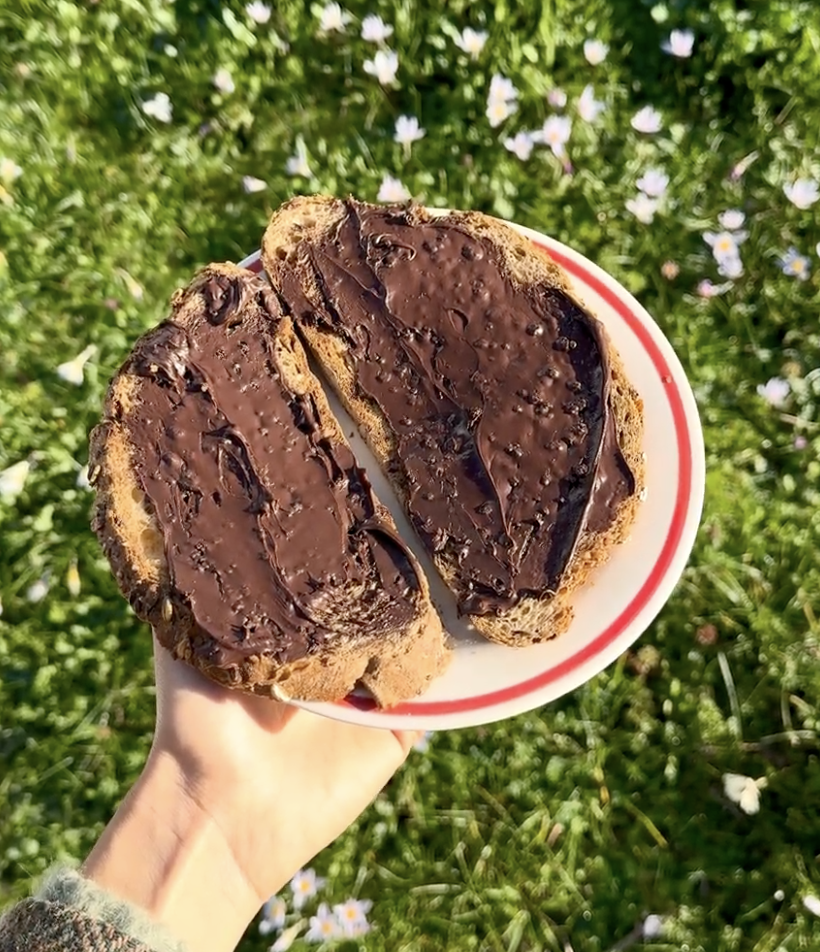
Gianduia
Acciughe al Verde
Anchovies play a surprisingly large role in landlocked Piedmontese cuisine, thanks to neighboring Liguria and the vie del sale–“streets of salt”–on which merchants brought olive oil, salt, and anchovies to the green valleys. The latter were brought along as part of a larger smuggler’s trade; adding a layer or two of anchovies atop a barrel of salt could help the merchants avoid taxation on the pricey crystals. Soon, however, the flavor bombs became just as valuable to the Piedmontese as salt, and both were imported with gusto. In this dish, the anchovies get desalted, softened, and drenched in bagnet verd–literally “salsa verde” or “green sauce”. Sharp, savory, and zesty, the sauce at its core is parsley, garlic, and anchovies with olive oil, vinegar, and bread, all smashed together with a mortar and pestle. Sometimes, you’ll also see eggs, pickles, and/or capers included. If this sounds like too much anchovy to you, you can skip the addition in the sauce; though, if you make extra bagnet verd, you can dollop it atop bollito misto (mixed boiled meats), grilled Tomino cheese, potatoes, cauliflower, fish, or lamb.
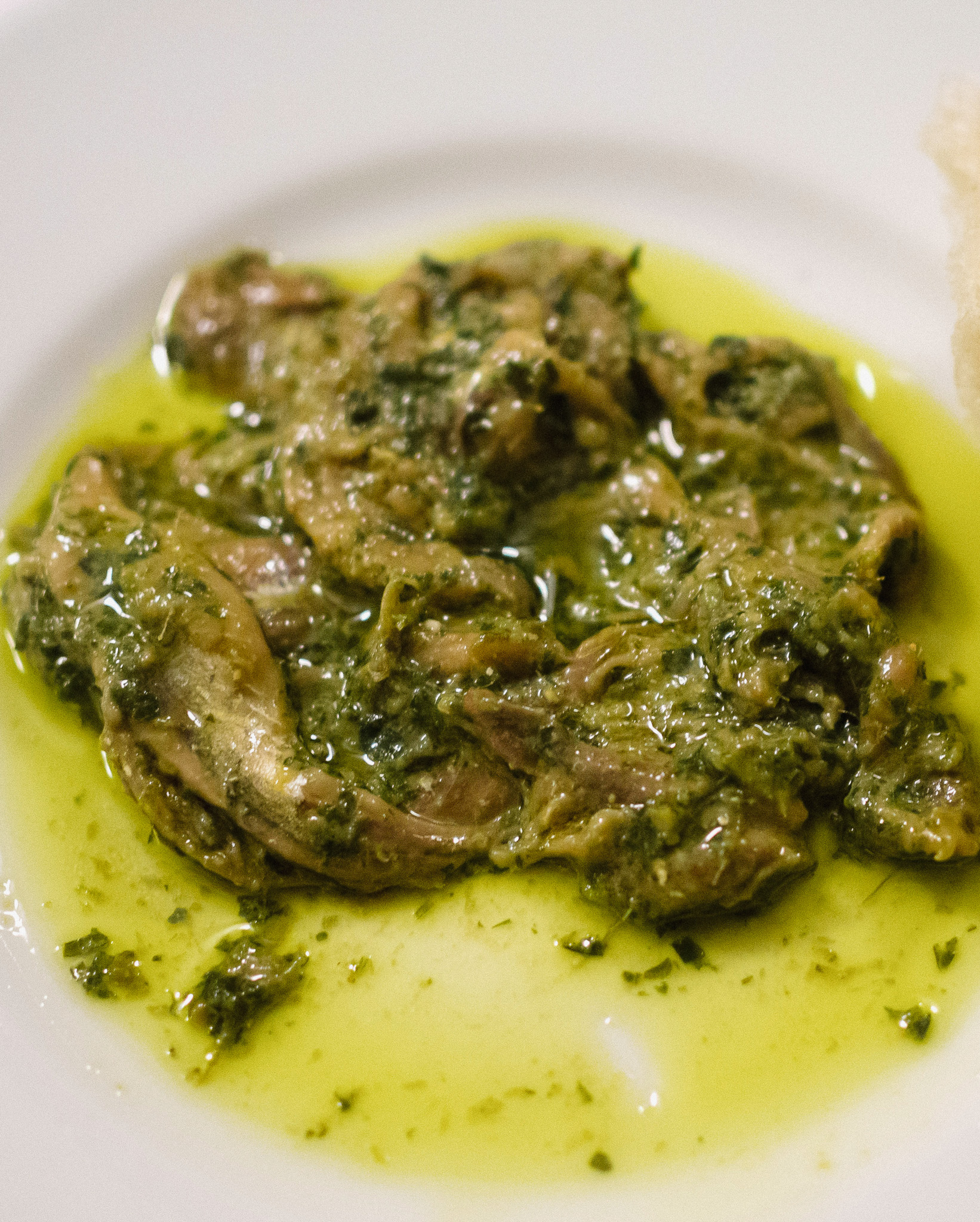
Acciughe al verde; By Takeaway - Own work, CC BY-SA 4.0
Brasato al Barolo
This delightfully cozy dish features two of Piedmont’s best ingredients–Barolo and the razza Piemontese cows–and it’s perfect for a winter’s day. Essentially, the secondo is just braised beef; brasato comes from brace, meaning “hot coals”, which would typically house a heavy pot to cook the meat, but today, a similar effect is achieved on the stovetop with a low flame. Tender cuts of the razza Piemontese are quickly seared and then slow, slow cooked with carrots, onions, garlic, celery, and aromatics like bay leaves, black pepper, rosemary, and cloves, all drowned in Barolo. Though this wine comes with a hefty price tag, it really makes all the difference in the meat’s final flavor and fall-apart consistency. This is Piedmont’s “Sunday roast”, best enjoyed with some polenta and a big glass of the namesake red.
Coniglio all’Arneis & Coniglio ai Peperoni
The lush, green hills that dominate most of Piedmont are perfect habitats for rabbits, and so it’s only natural that these fluffy critters are a large part of the region’s cuisine. In fact, Slow Food has recently added the Carmagnola Grey Rabbit to their Ark of Taste, since the breed, difficult to raise in cages, nearly went extinct in the 1950s. Their white meat is incredibly tender and tasty, the main ingredient in two of the region’s famed dishes: coniglio all’Arneis and il coniglio ai peperoni. The former is seared rabbit stewed in local white Arneis wine with the usual celery, carrot, onion, and garlic; it calls back to the historic “hare al civet” recipe, in which wild hare is marinated in wine and its own blood. Similarly, the latter dish is seared rabbit stewed in red wine plus a mountain of peppers, anchovies, and onions that are pre-cooked together in butter. Some people also add vinegar to the dish, and the final product should be accompanied by a thick slice of bread to sop up all the sauce. You’ll also find rabbit cooked into agnolotti al plin, turned into a ragù for tajarin, and in “tonno di coniglio”: rabbit meat slow cooked, shredded, and then preserved in oil, giving it a consistency similar to tuna.
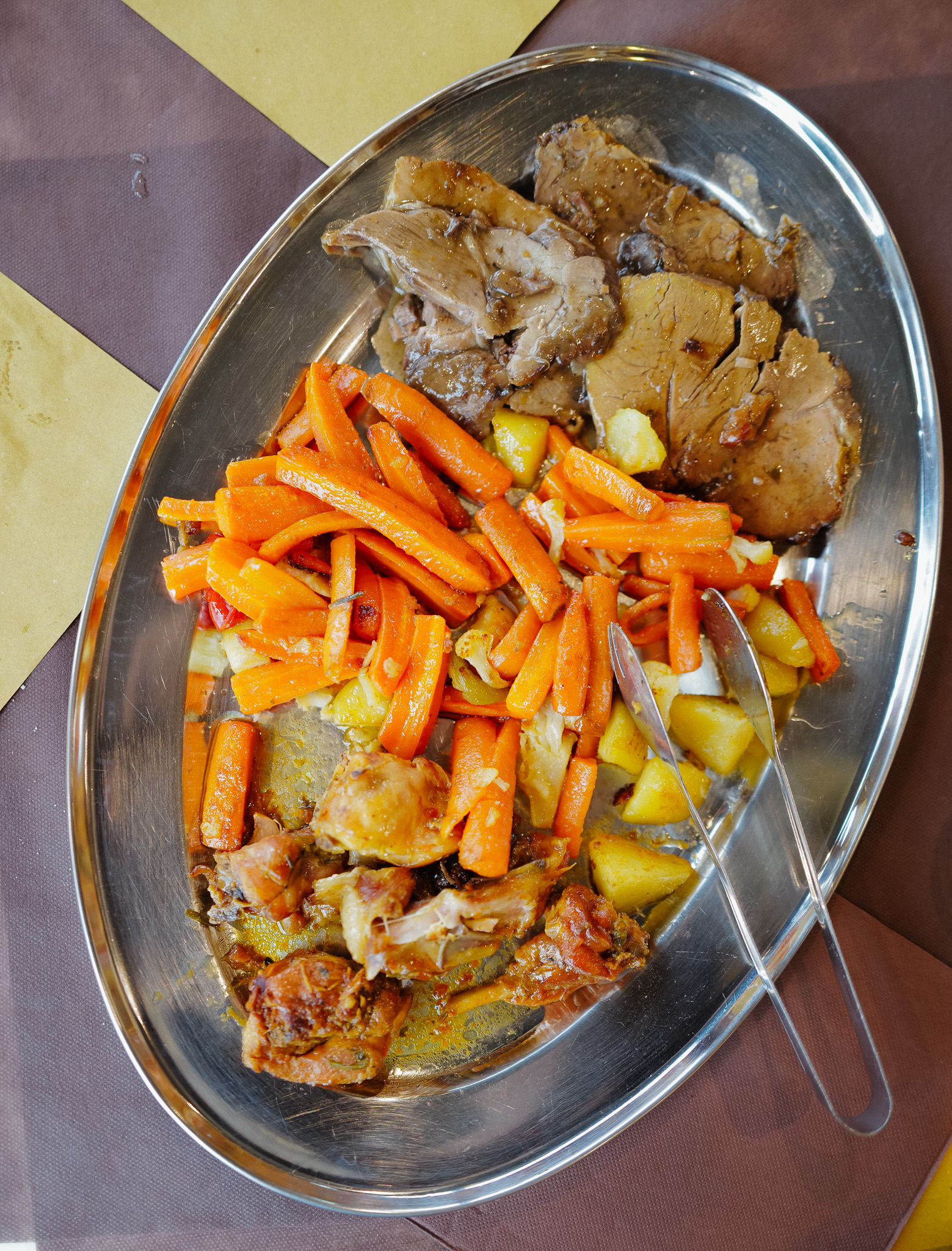
Coniglio all’Arneis on the left, Brasato al Barolo on the right
Zabaione
Zabaione, also known as zabaglione or zabajone, is one of the simplest, most scrumptious desserts in the Italian repertoire. This custard-like cream is made by whisking together egg yolks, sugar, and a fortified wine–traditionally Marsala or Moscato d’Asti–over gentle heat until it thickens into a creamy, frothy consistency. A few regions (Emilia-Romagna and Tuscany) lay claim to inventing this boozy delight, but the most believed theory places its origin in Turin in the 16th century, when it was created to honor the Franciscan Saint Pasquale Baylón, the protector/patron saint of baked goods. It was named the “cream of San Baylón”, and later “Sambayon”, which is still how it’s referred to in dialect. The name “zabaglione”, meanwhile, is believed to have originated from the Venetian word “zabajon,” which aptly means “whipped.” You’ll likely find the stuff served warm, as a sauce or topping for other desserts or pastries (like hazelnut cake), or slightly chilled and served with berries–our favorite way. If you’re not going to Piedmont anytime soon, you can find our recipe here.
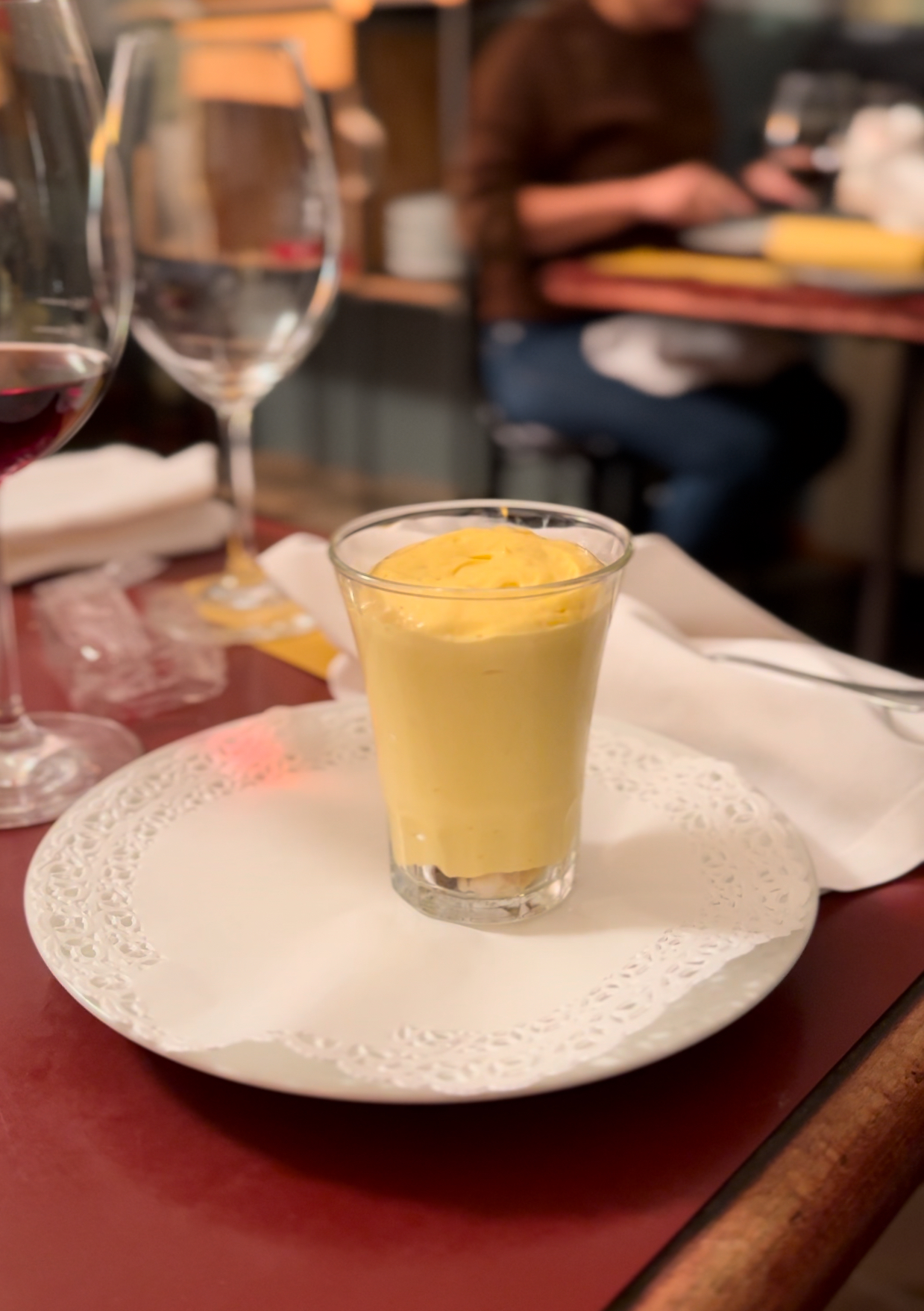
Zabaione
Carpione
This salad of sorts is Piedmont’s version of Venice’s “saor” and southern Italy’s “scapece”, and it refers to the vinegar marinade used on anything from fish to meat to vegetables. The name comes from the freshwater fish carpione, similar to a carp, that gets preserved in wine and vinegar before eating. You’ll usually see this dish made with carpione or other freshwater fish–like coregone (whitefish), arborella, anguilla (eel), and cavedano (chub)–plus chicken, veal, and eggs, all of which are fried first. The two-in-one marinade and preservation method is simply white vinegar, sage, garlic, onion, wine, and sometimes bay leaves–though some families also use a soffritto base–best if left to rest for at least 24 hours. The dish is usually enjoyed cold, making it a great part of languid summertime lunches in Monferatto and the Langhe.
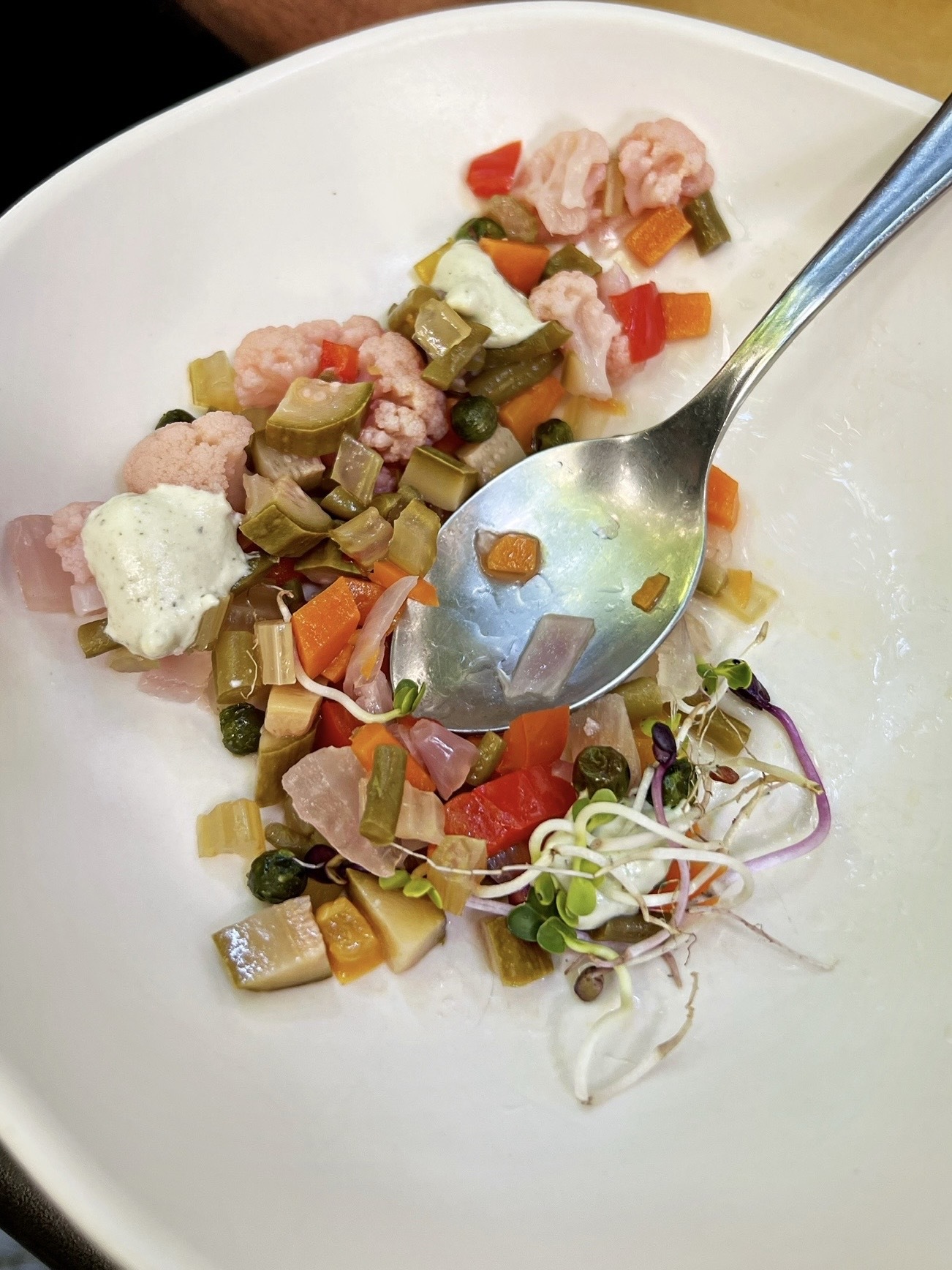
Carpione; Photo by Matthew Maida
La Finanziera Alla Cavour
Although you’ll now find this dish among the tables of the best fine-dining establishments in Turin, it was intended way back in 1450 by Maestro Martino da Como as a way to use up the slaughterhouse waste. He combined unfavorable cuts, most notably the cockscombs from roosters and capons, with butter, mushrooms, wine, and vinegar, creating a hearty stew that disguised the possibly rancid flavors of the meat and became popular among the peasant class. In the 19th century, Camillo Benso from the Count of Cavour, requested that it be prepared in the famed restaurant Cambio, which had been open in Turin since 1757; so chef Giovanni Vialard created a version he called “Salsa e Ragout à la Financière”. It became a hit among the Piedmontese bourgeoisie, bankers and men of high finance who wore a formal ceremonial jacket called the “finanziera”. Others suggest that the name originated from farmers paying guards (“finanzieri”) with chicken offal in order to enter the city.
Bonus: Bicerin
For those who aren’t afraid of a little caffeine and sugar overload, may we present the bicerin: an espresso with a kick thanks to equal parts thick chocolate and whipped cream. It’s an evolution of the 18th-century bavareisa, a fashionable drink made with coffee, chocolate, milk, and syrup that came to be known as “’n poc ‘d tut”, or “a bit of everything” in Piedmontese dialect. Today, the bicerin really does have a bit of everything, but the name now refers instead to the small, handleless glass that the drink is served in, as opposed to an espresso cup. Many of Turin’s and Piedmont’s most iconic cafes serve the rich drink, but it’s best at the eponymous 250+ year old Caffè Al Bicerin that’s located right across from the Consolata, a 5th-century Marian sanctuary. The story goes that the bicerin was a re-energizing drink for those fasting for the holy communion, who would head right across the piazza to the cafe for a quick fix.
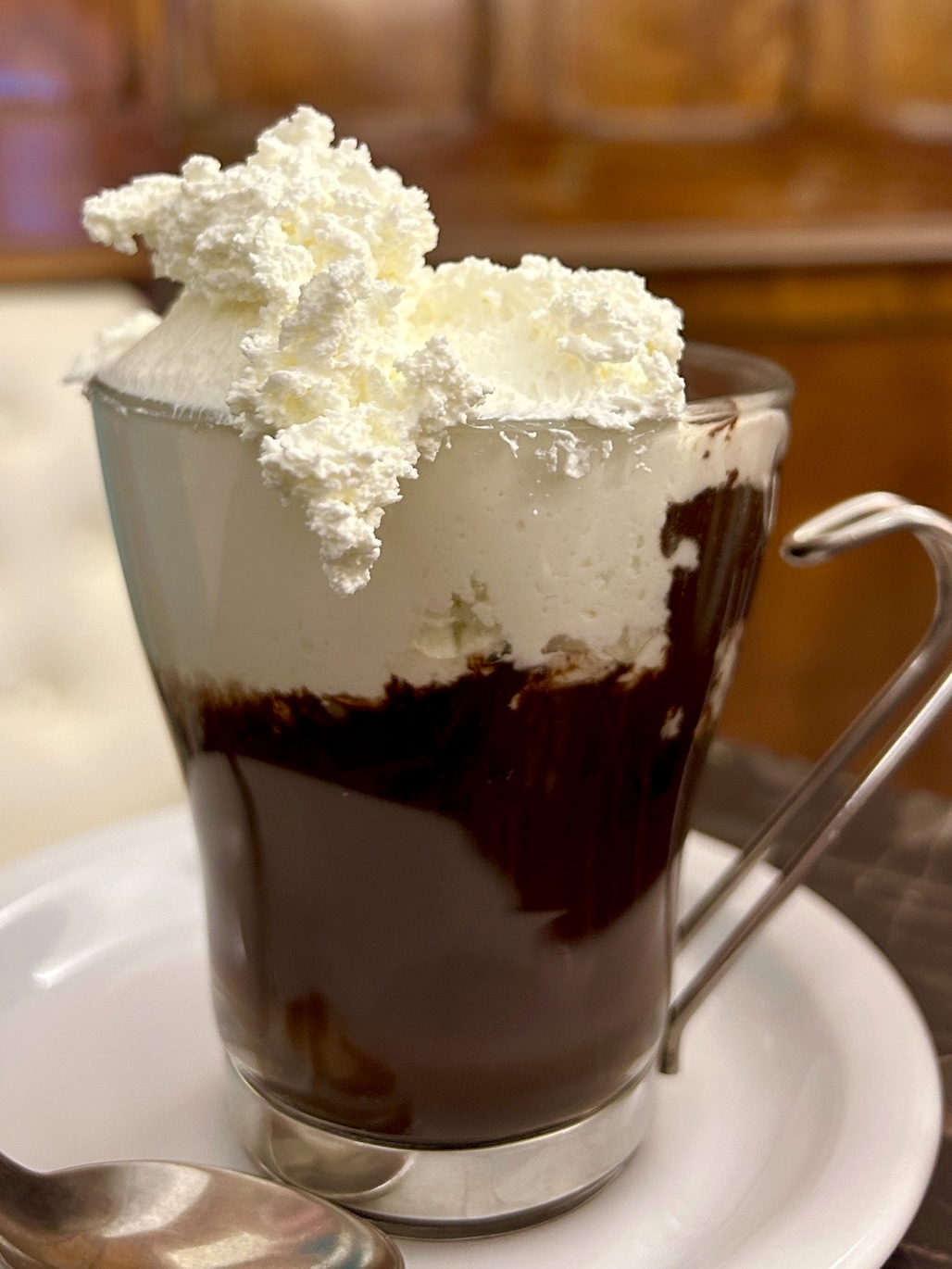
Bicerin
